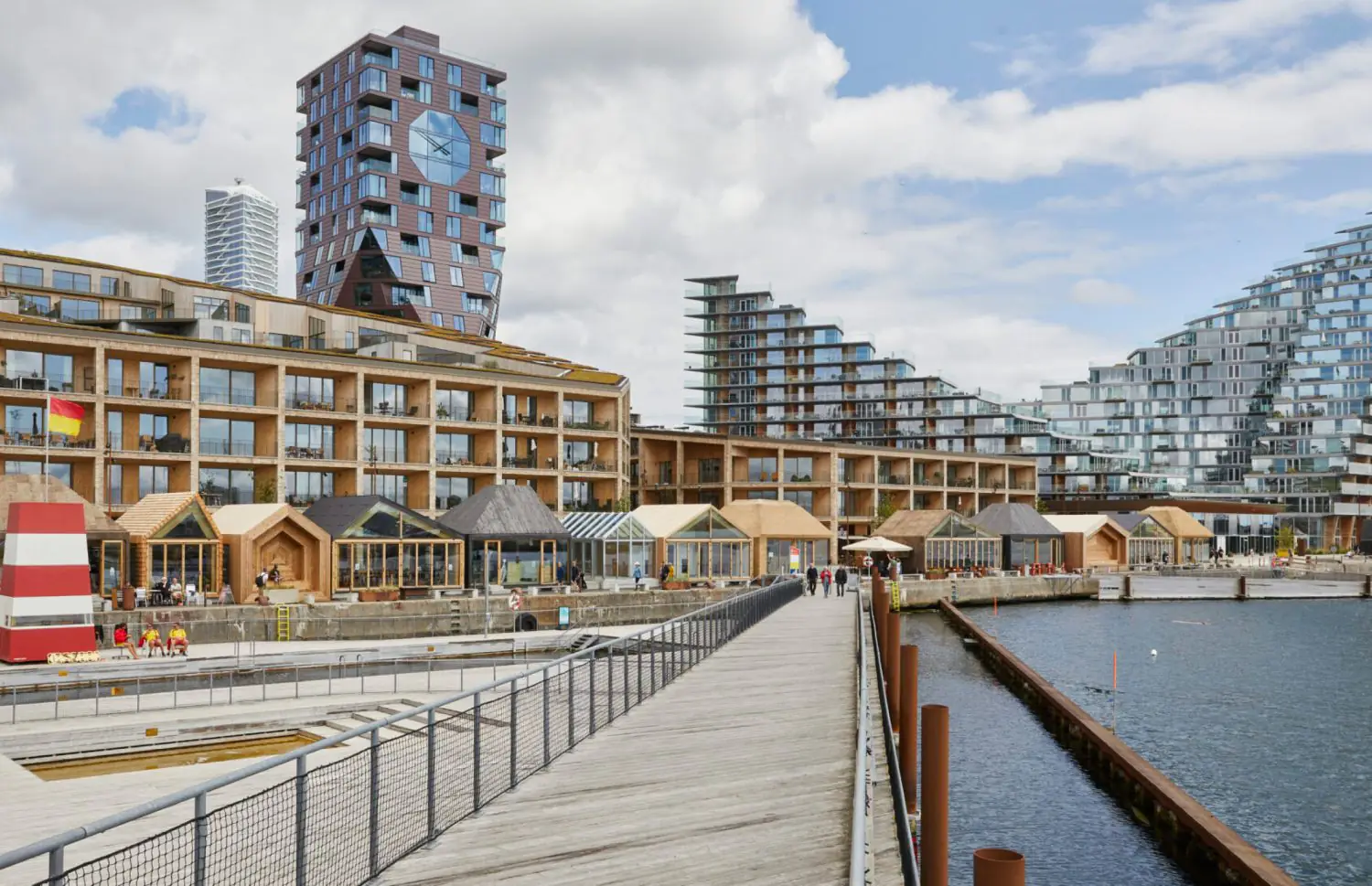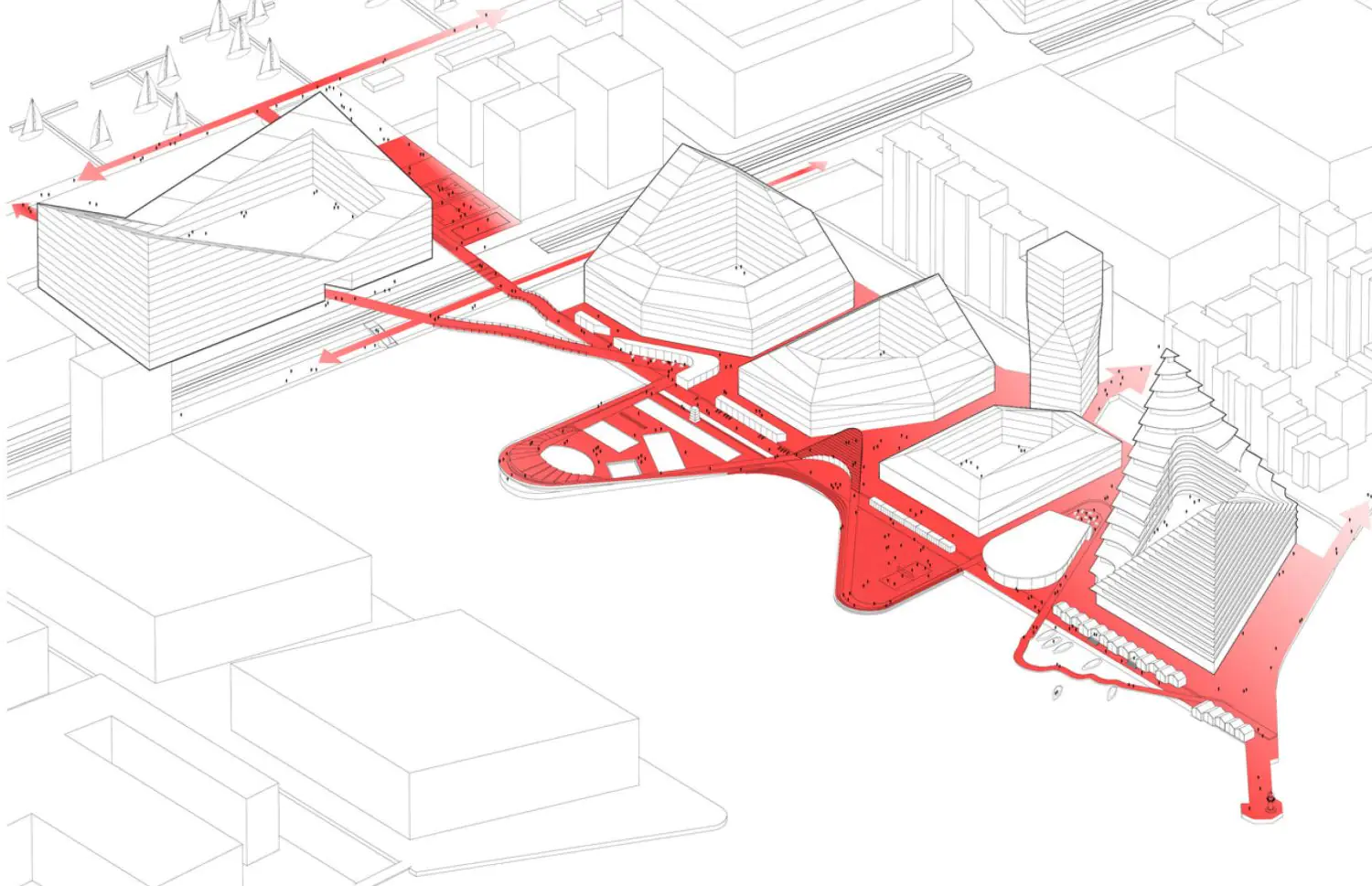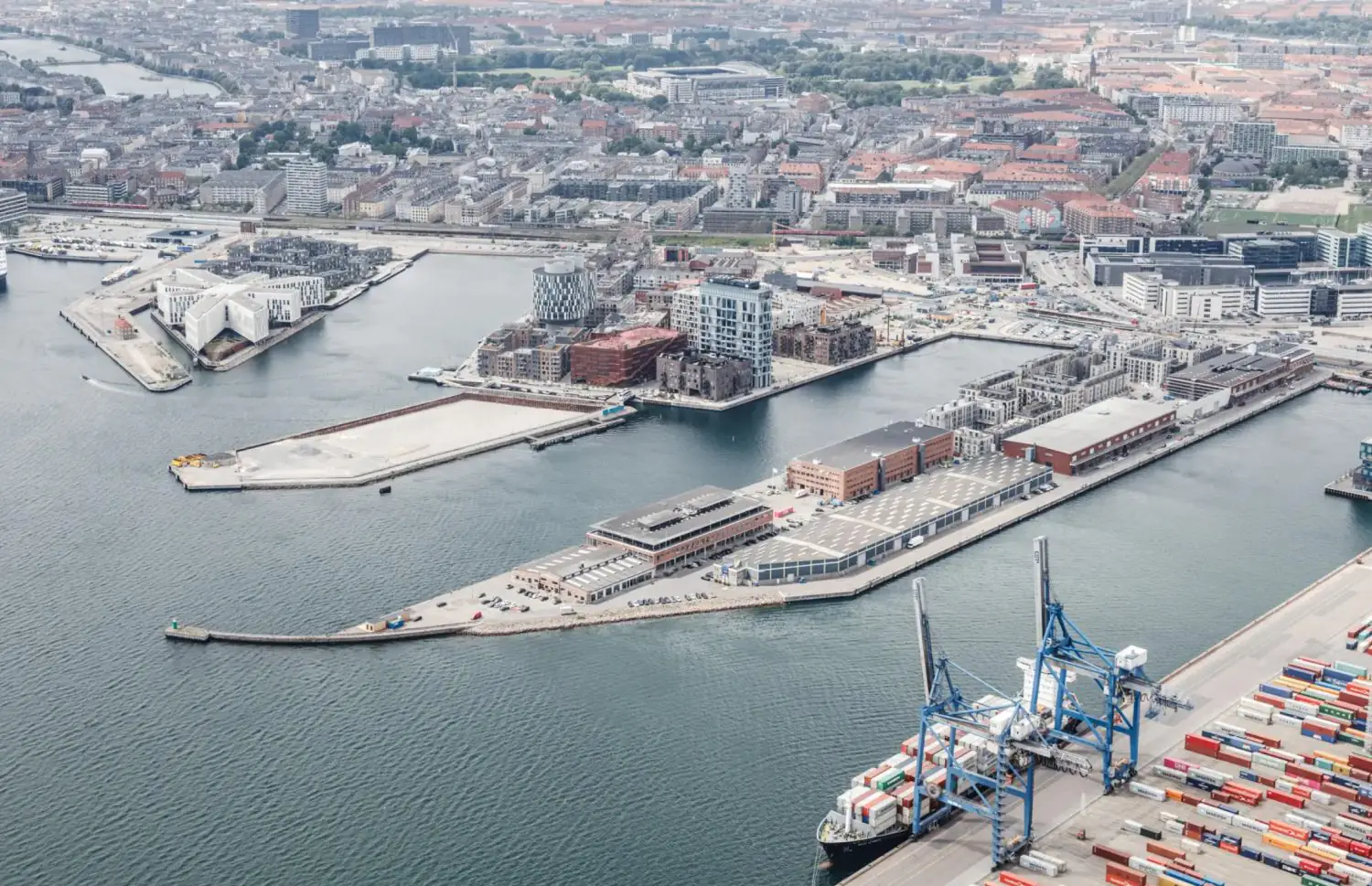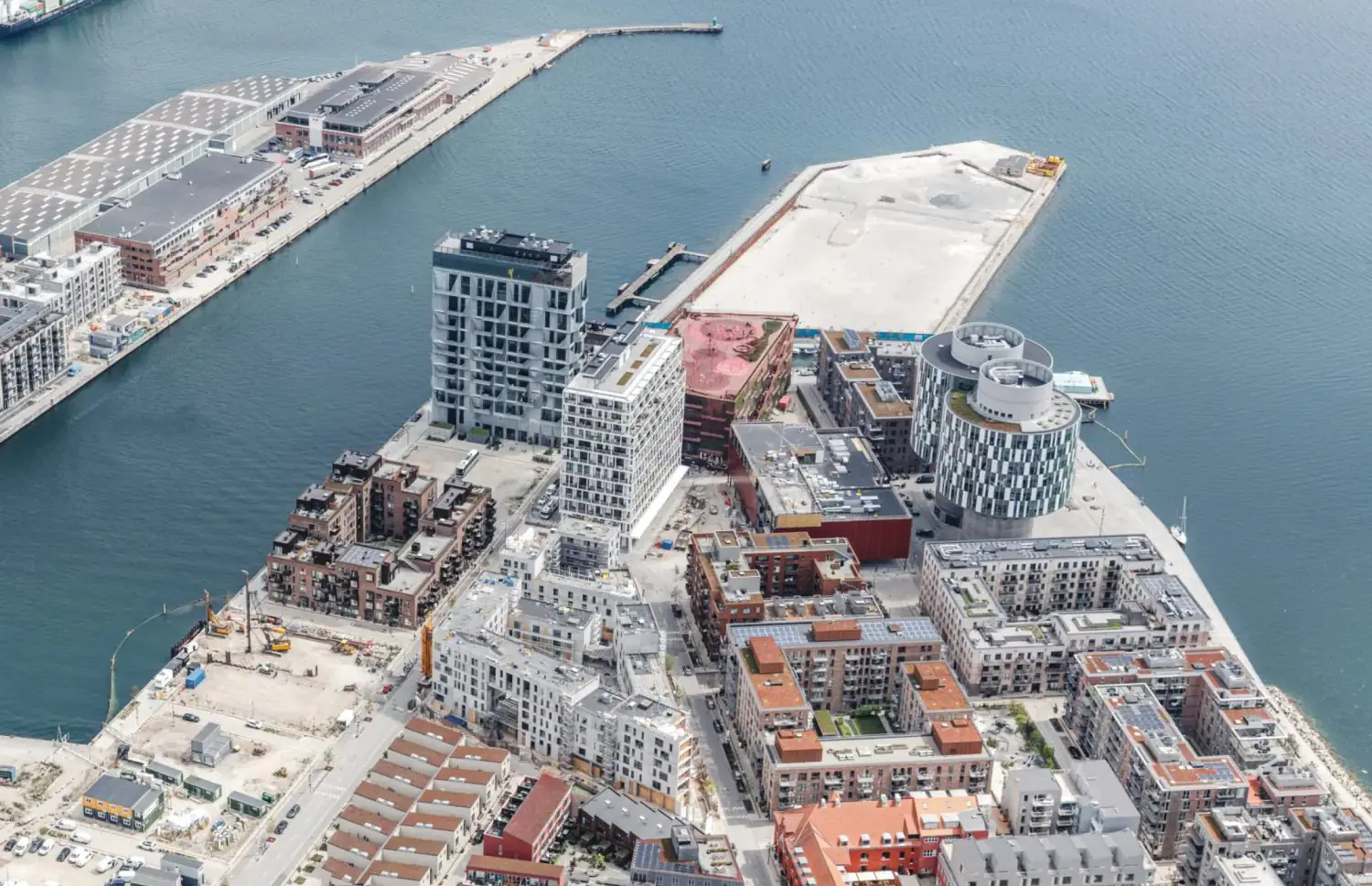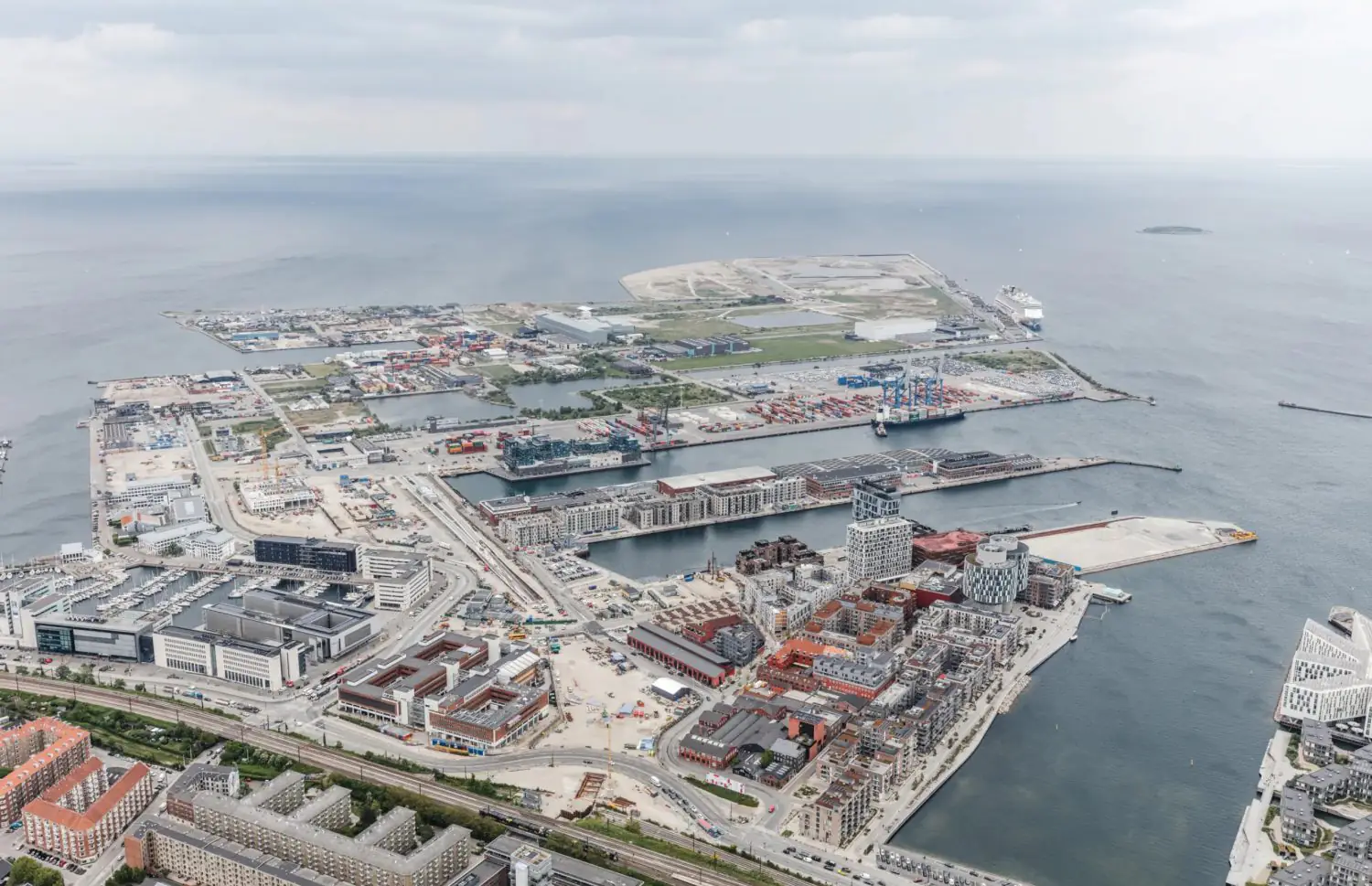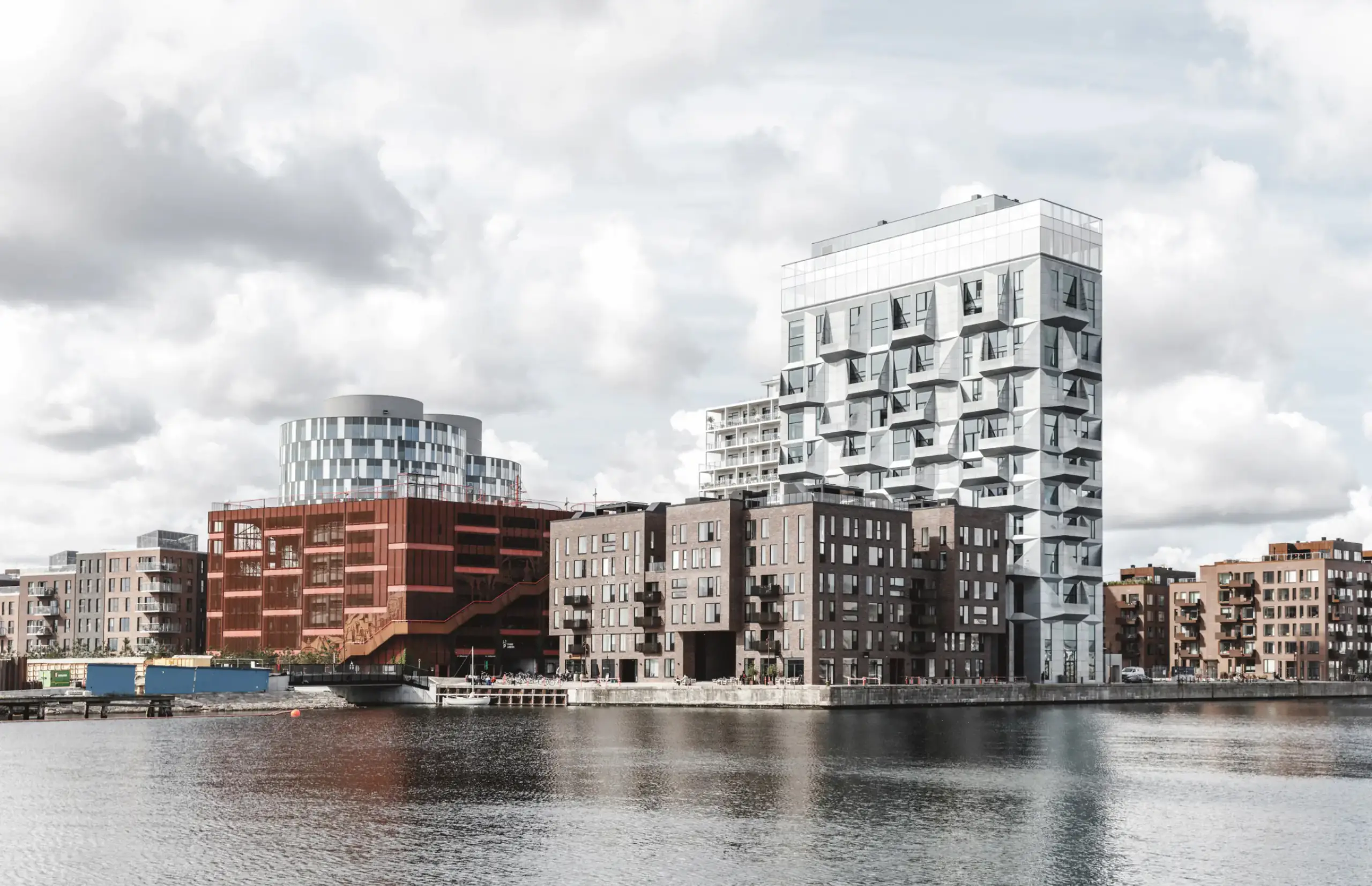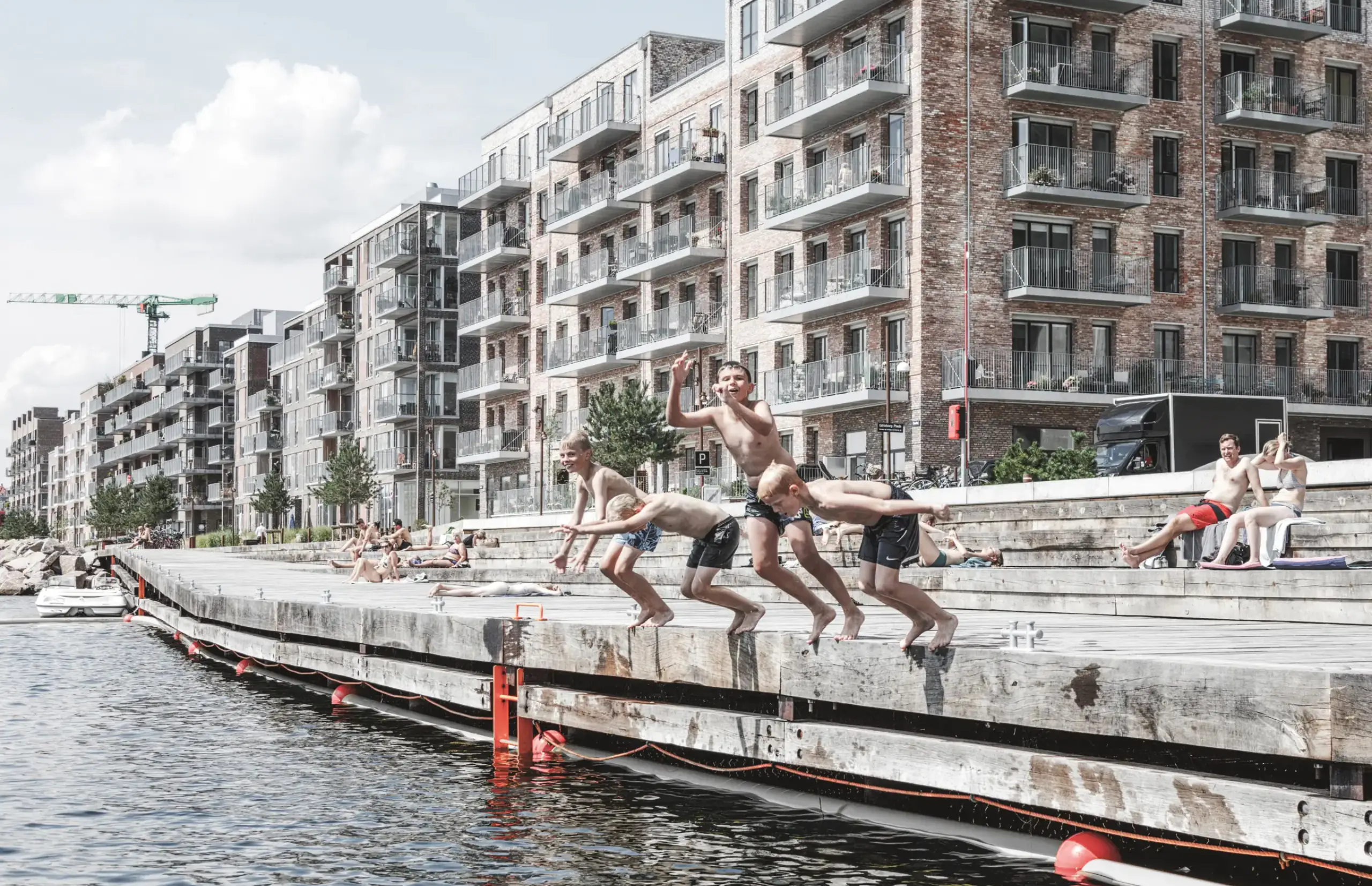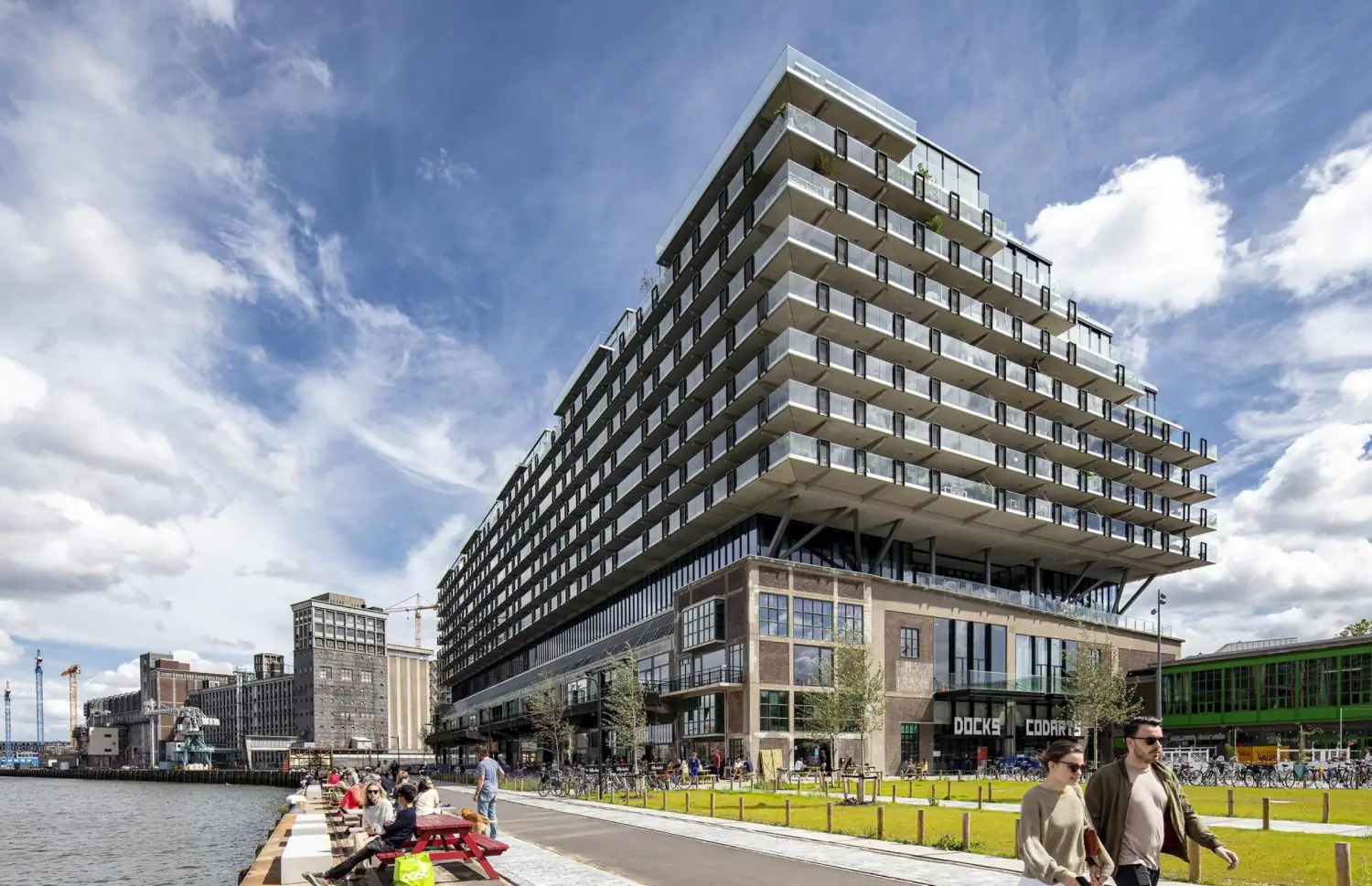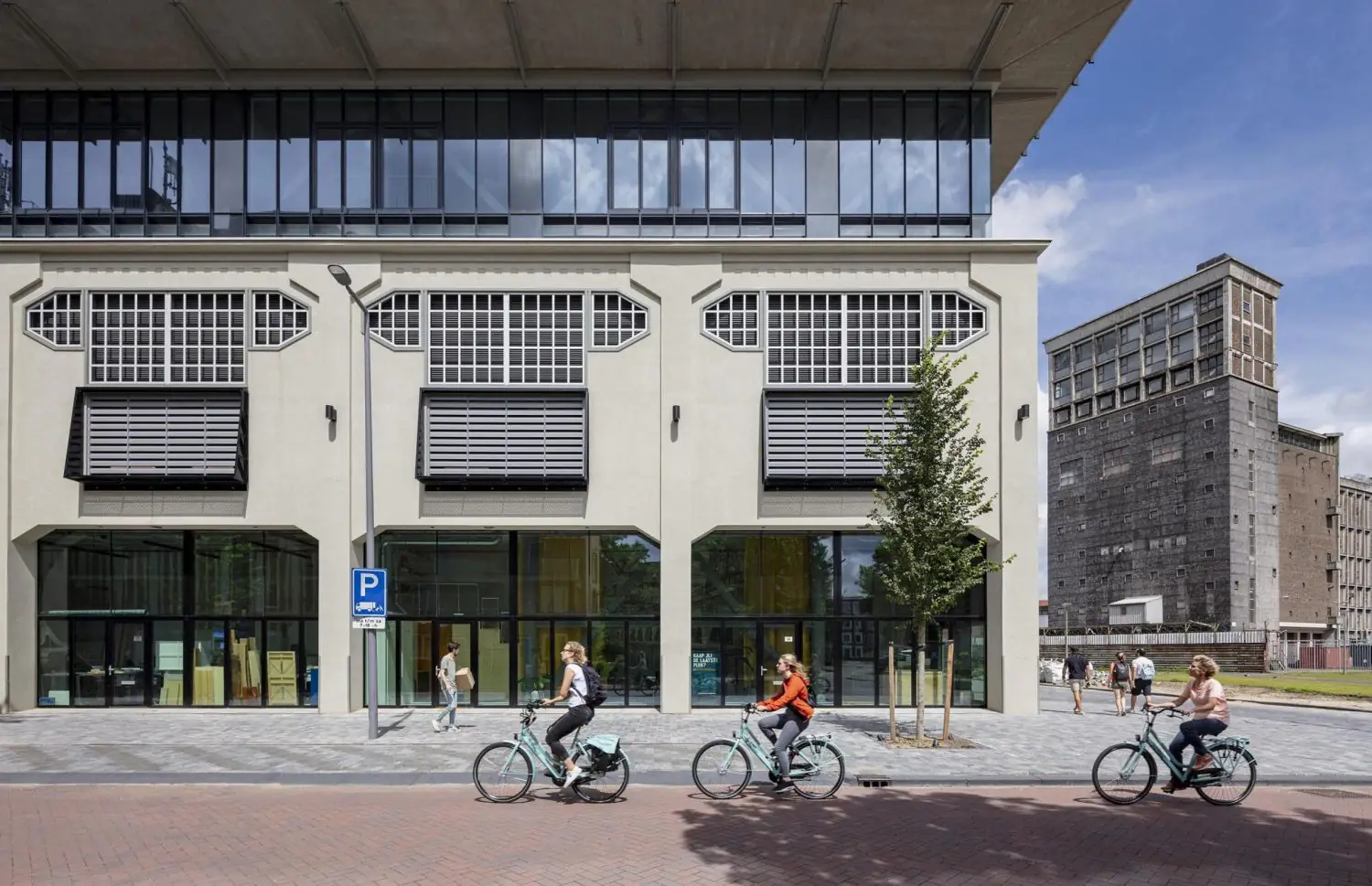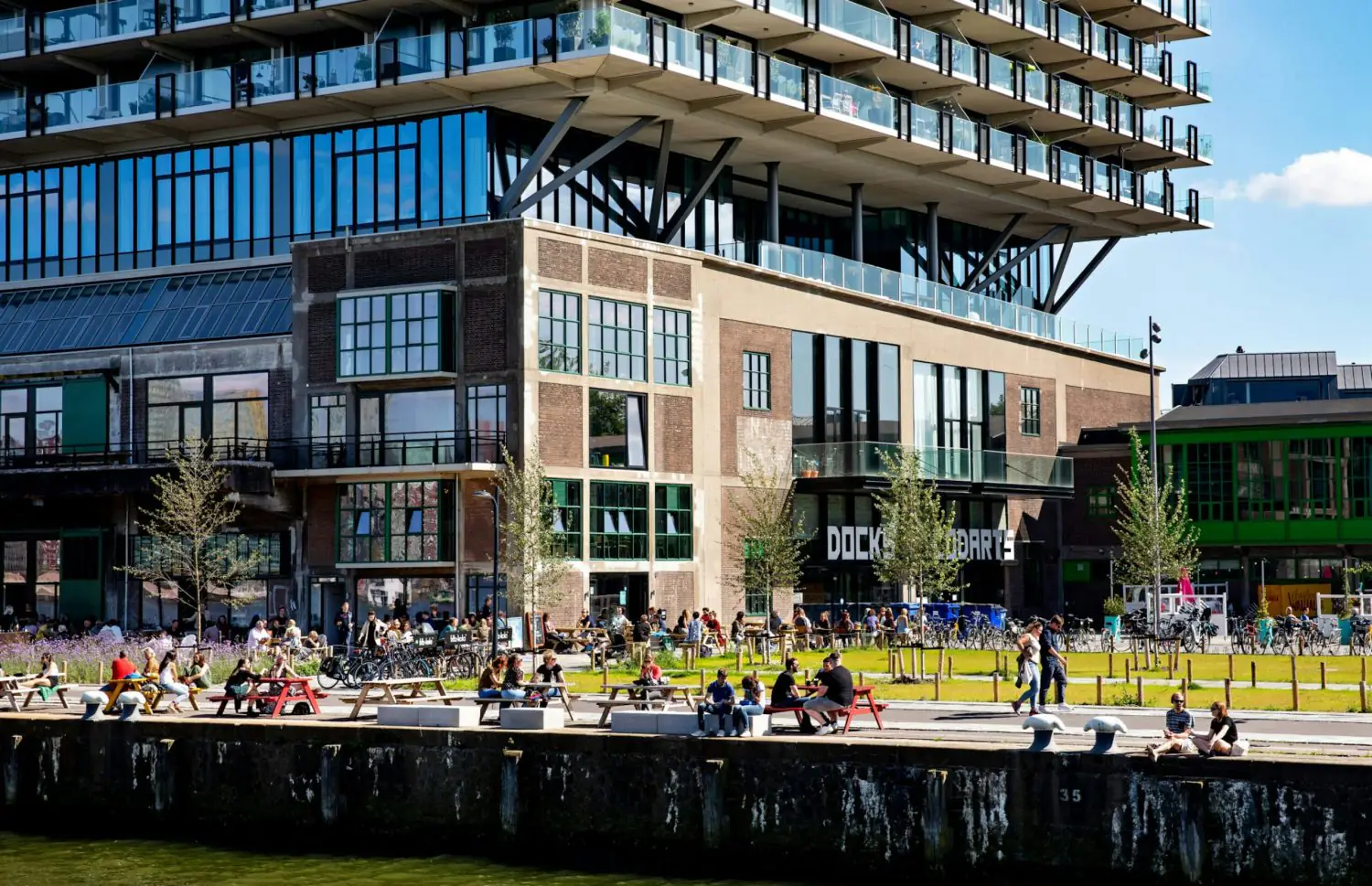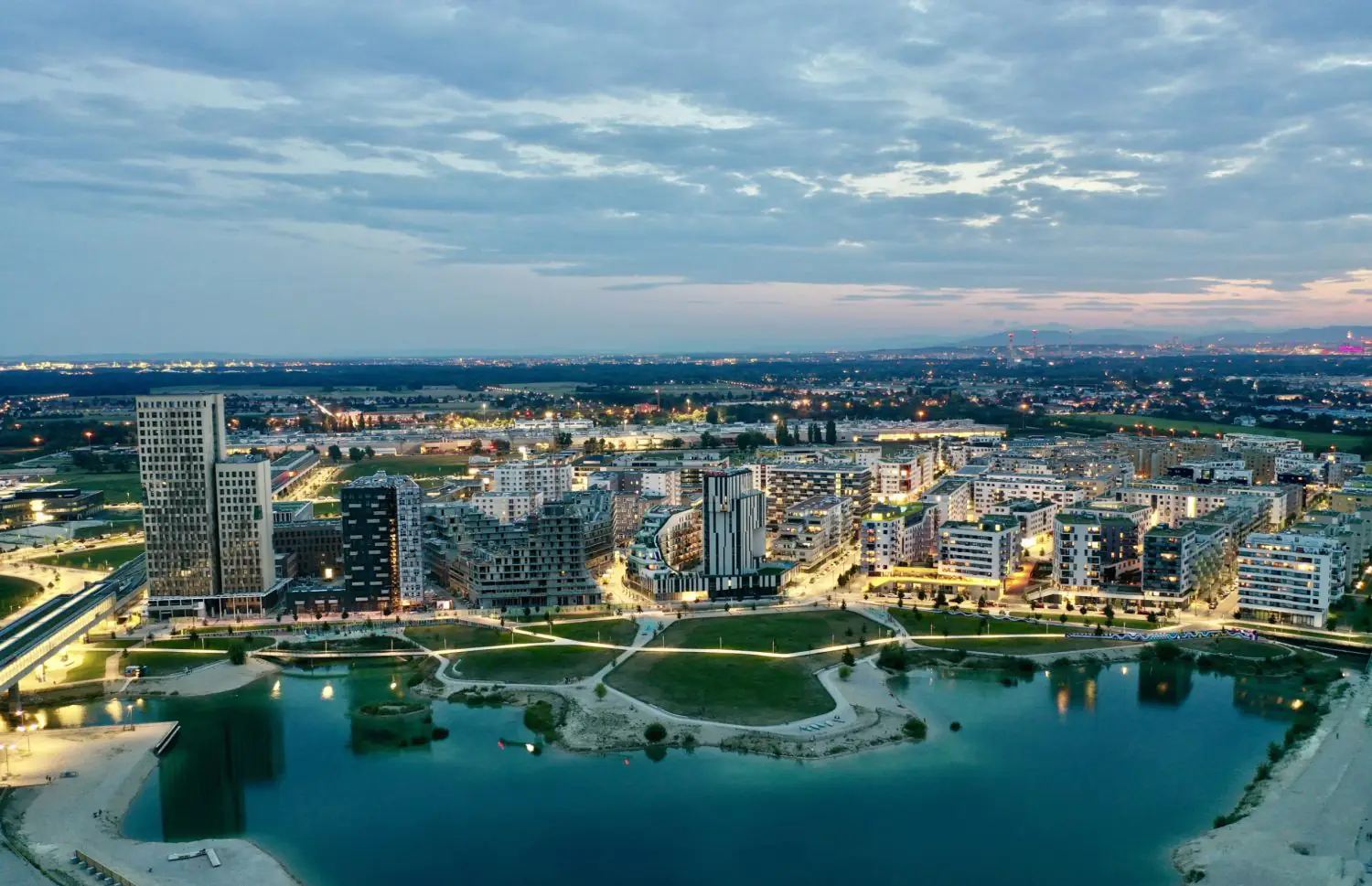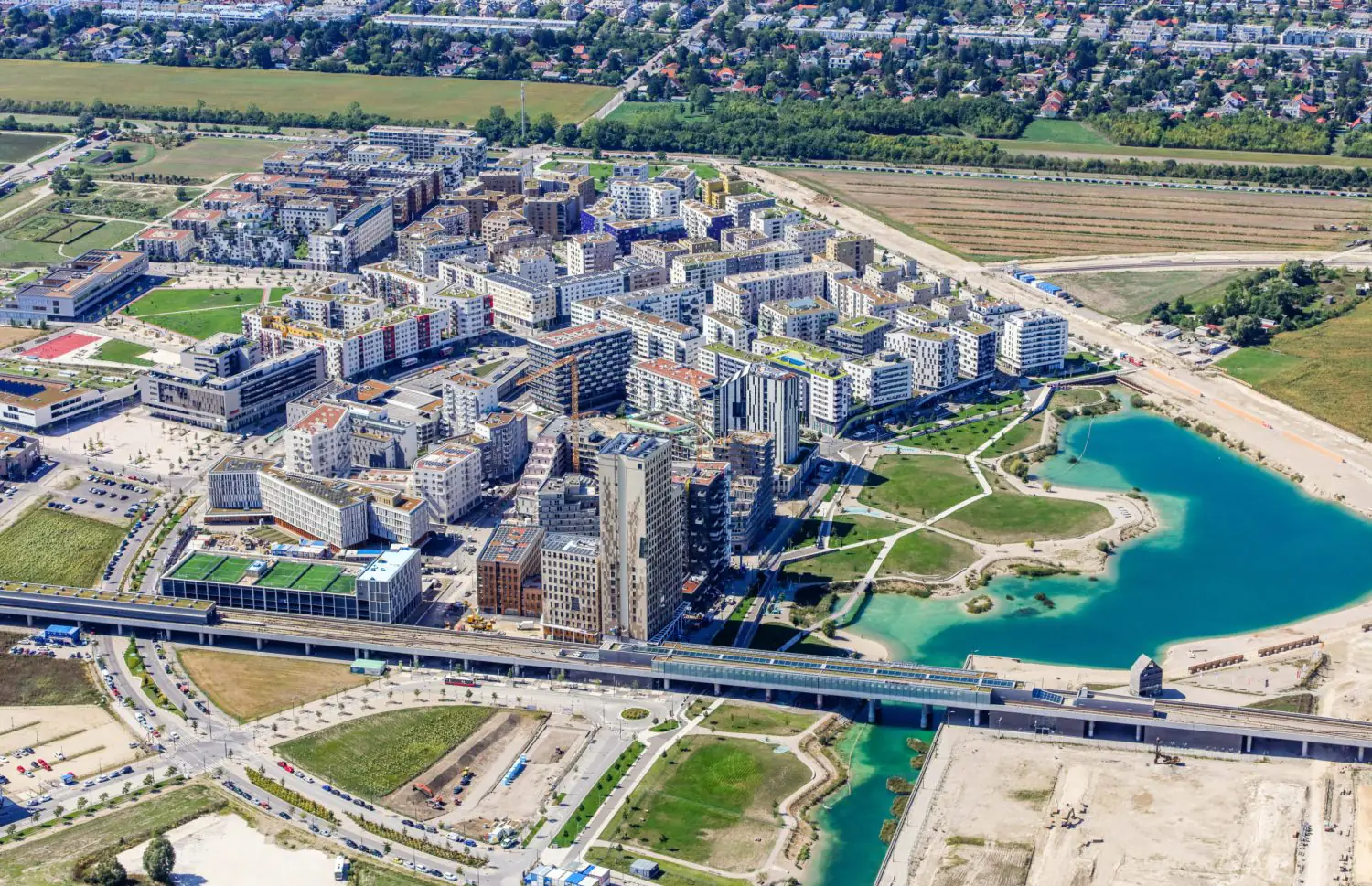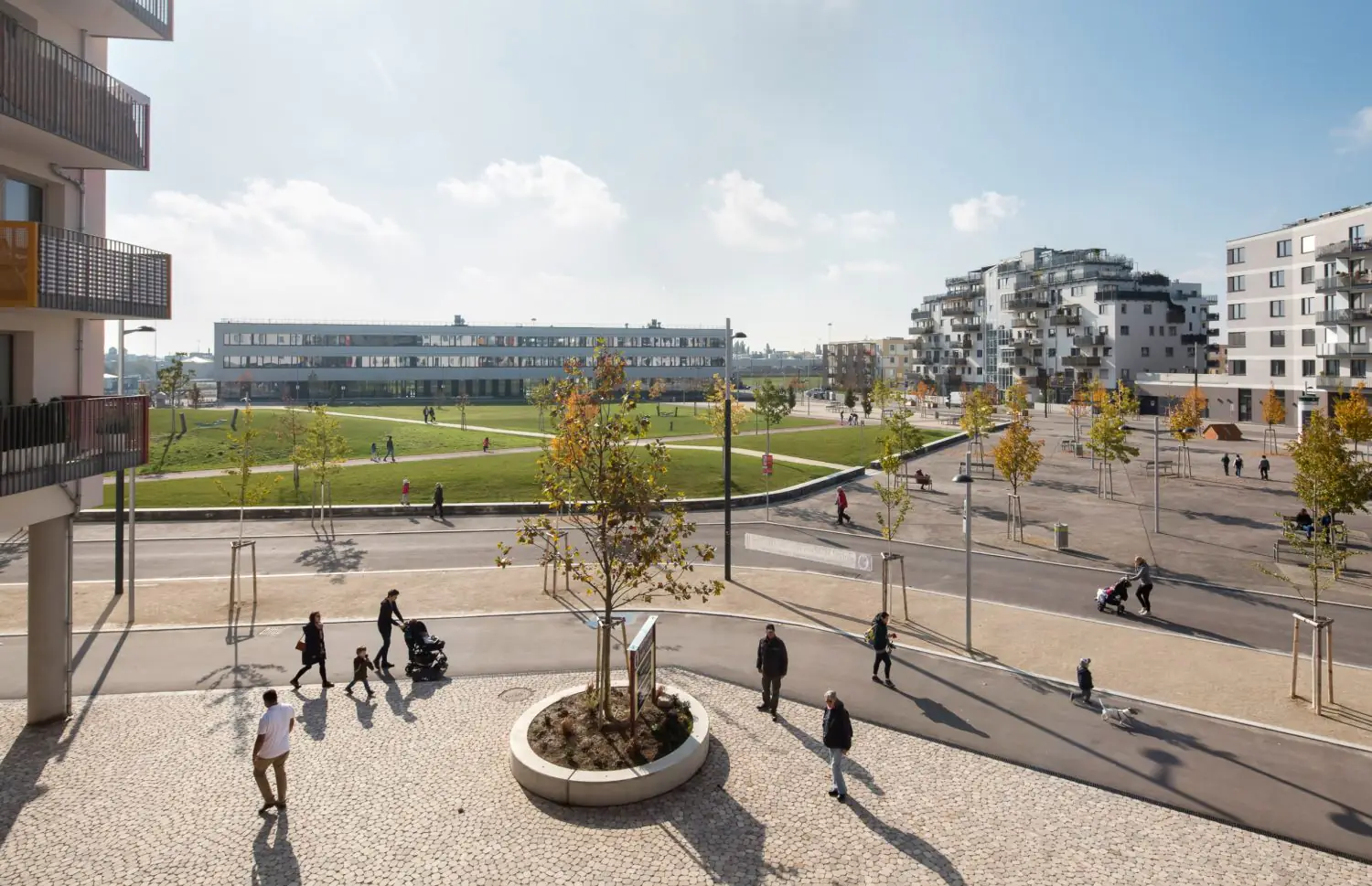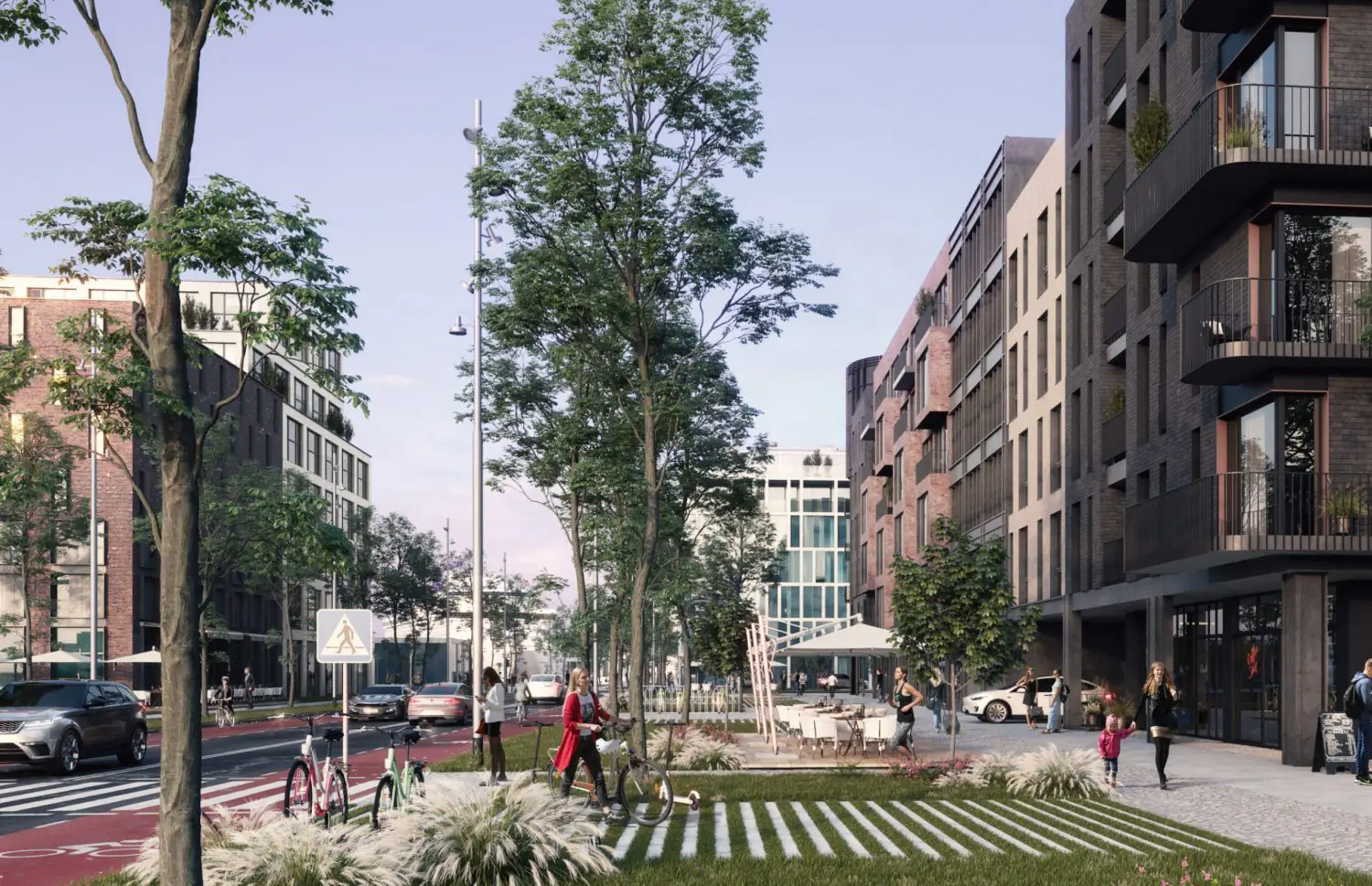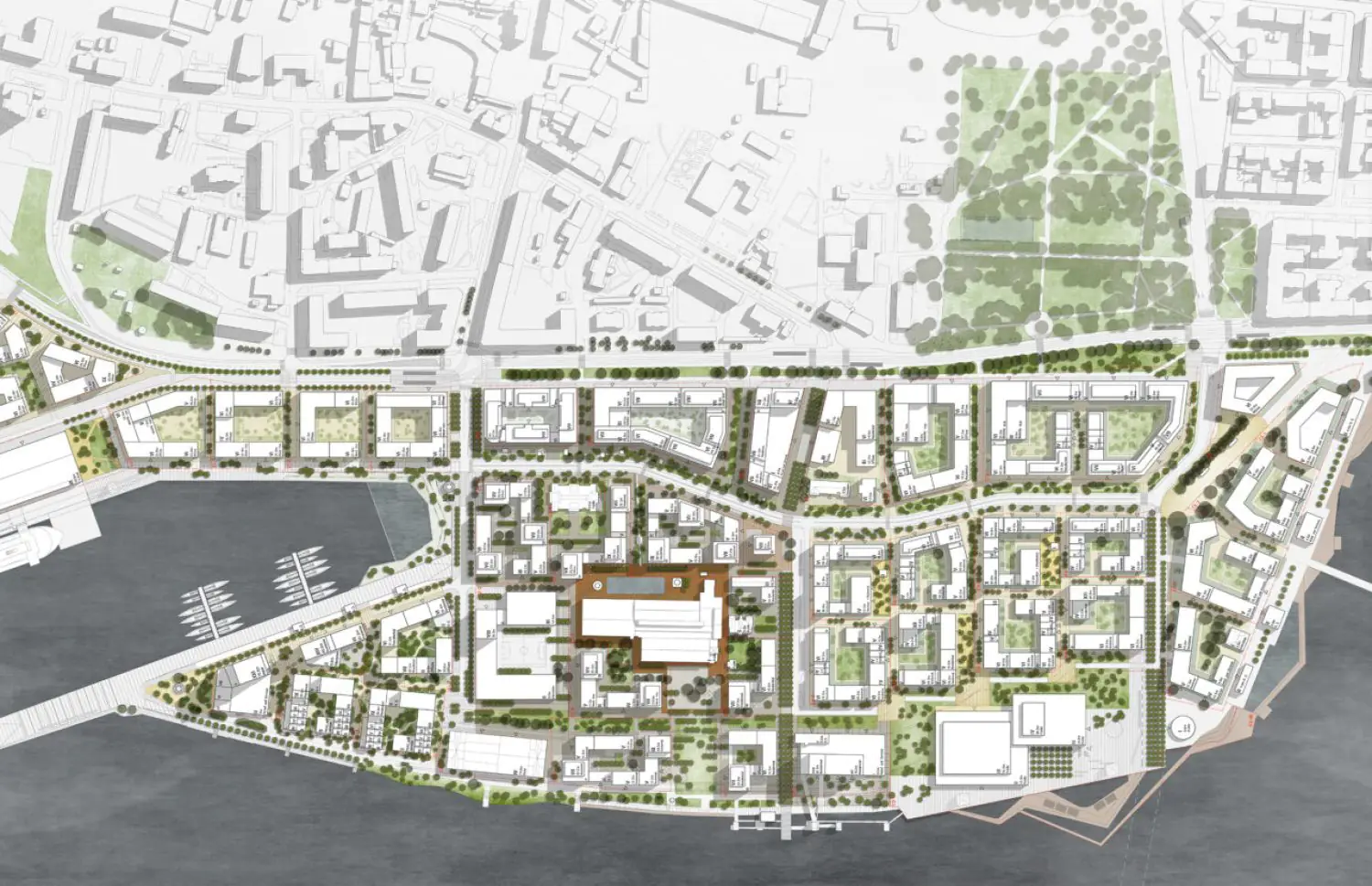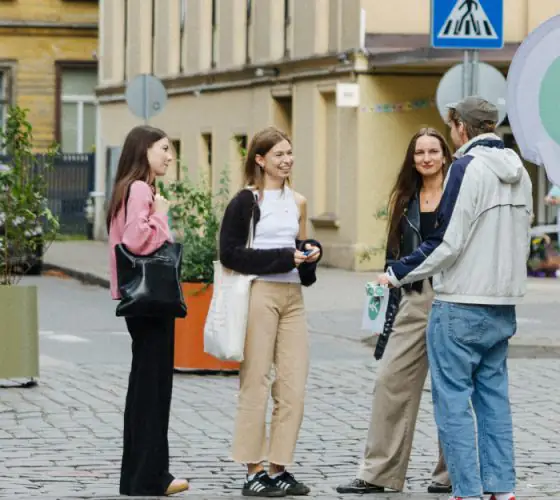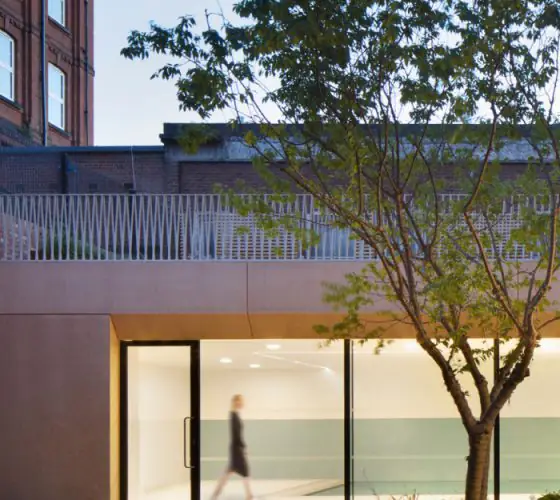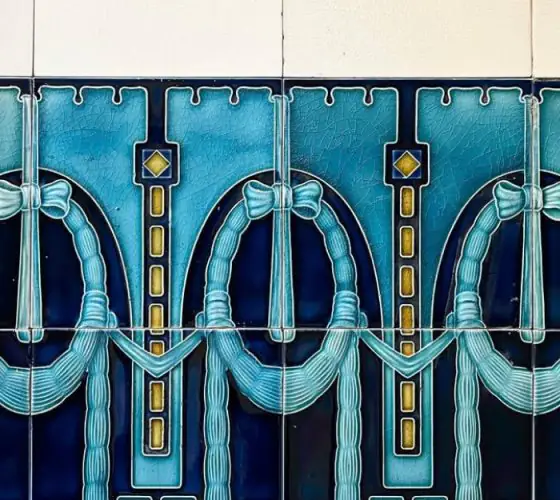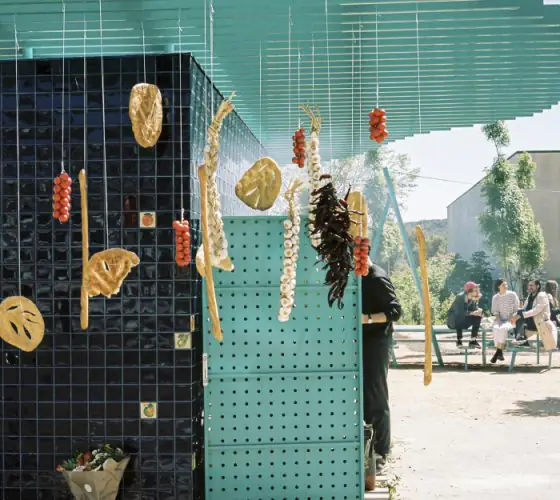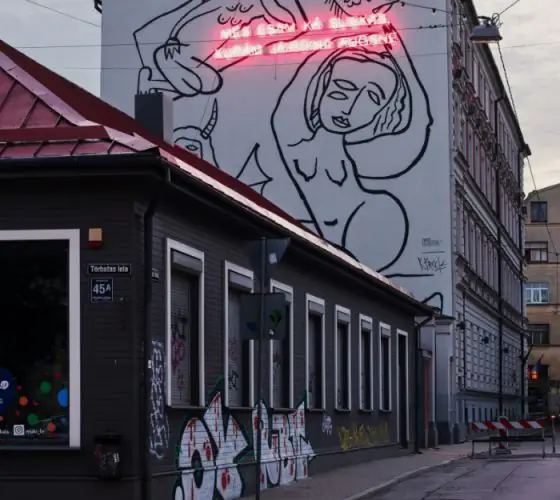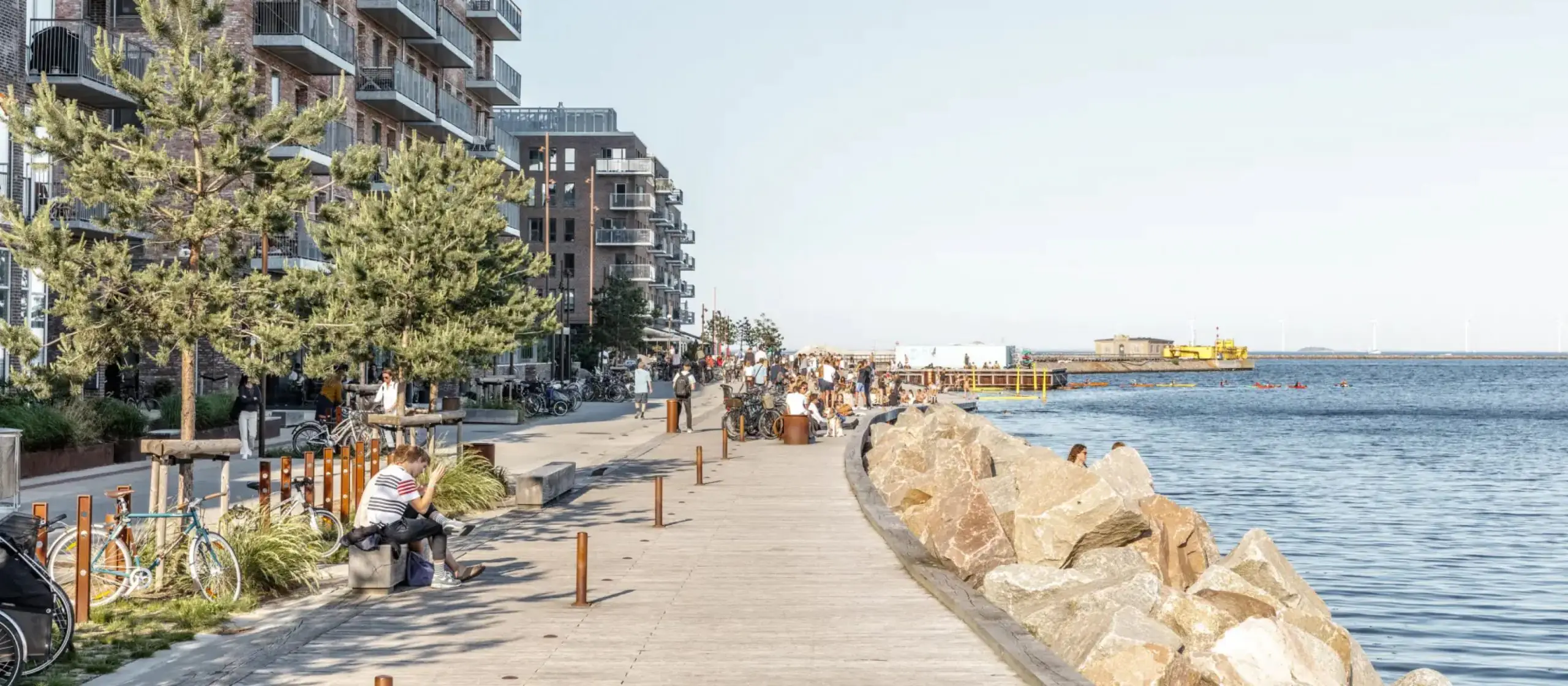
cobe.dk
To gain a better understanding of how to transform riverbanks and coastlines and design a balanced urban environment by the water in Riga and throughout Latvia, we can draw upon established experiences. How does the approach to waterfront development vary from city to city? What factors are important to consider in major redevelopment projects? What innovative ideas and methods from recent years should be embraced? To address these questions, let us take a look at ten large-scale waterfront redevelopment projects in major European cities.
The ambition of the Bassin 7 project in Aarhus, Denmark’s second-largest city, is to breathe life into an abandoned industrial port and transform it into a modern residential neighbourhood. Gehl and BIG developed a master plan for the area, aiming to connect the harbour to the city and create an attractive living environment within it.
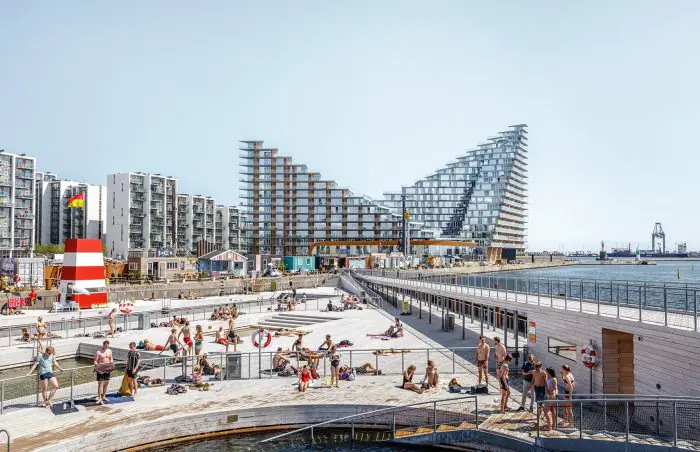
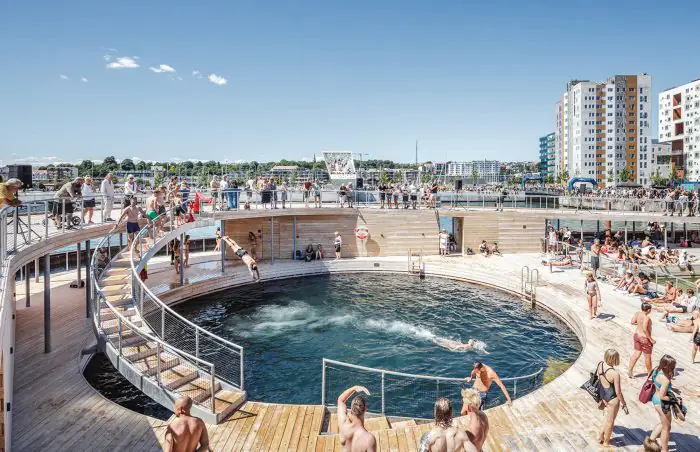
Between the curved esplanades of one of the seafronts are urban bathing areas, an open-air theatre, observation decks, cafes, and restaurants. These new public spaces are intertwined with dense mixed-use development along the water, connecting residents to the existing boat harbour and the nearby town square Nikoline Kochs Plads. BIG architects claim that all new buildings will have a private courtyard for residents, while the streets in the development will remain public, creating a space for spontaneous interaction and socialising.
In 2018, the harbour baths opened to the public, bringing life to the waterfront despite the massive construction work that still unfolded around it.
Malmö Västra Hamnen
Location: Malmö, Sweden
Architects: Malmö’s City Planning Office
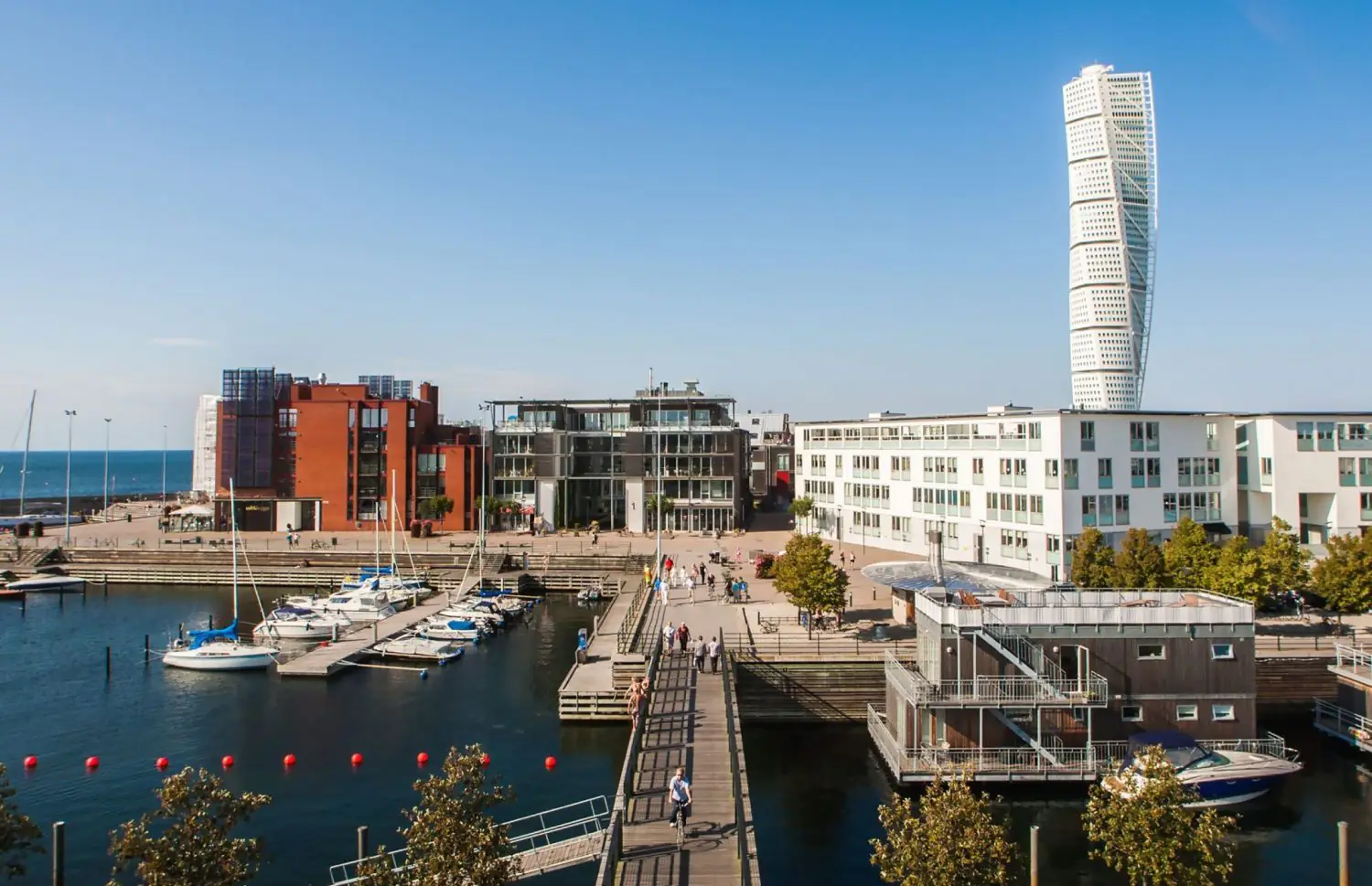
Once a neglected industrial area, since 2001 Västra Hamnen has become a new centre of attraction for the city, with diverse residential development, a landscaped promenade and a city beach. The Turning Torso by Santiago Calatrava is a local landmark, and skateboarders from all over Europe come to visit the local skate park. It is probably no coincidence that the neighbourhood was developed at the same time as the nearby Öresund Bridge, which connected Malmö to Copenhagen: the importance of connectivity in such projects can hardly be overestimated.
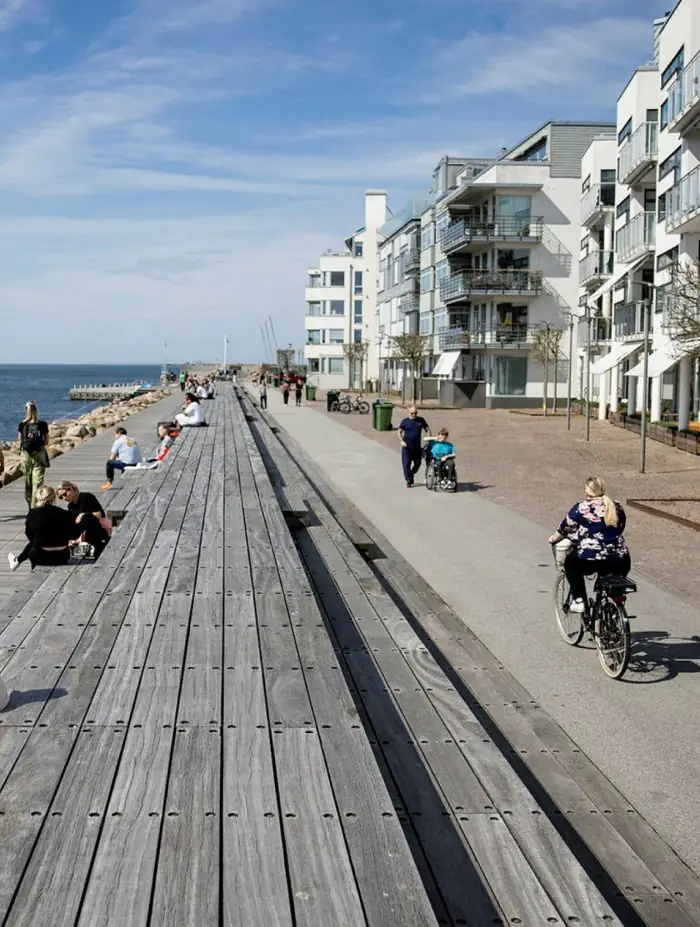
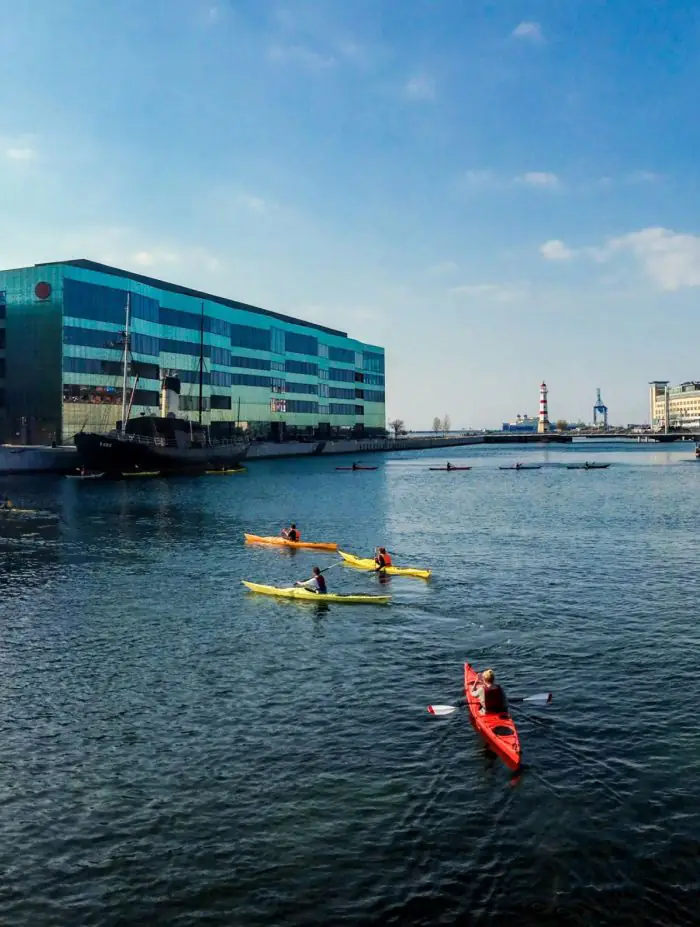
In 2022, the city authorities presented a project for the renewal of the Västra Hamnen over the next ten years. The agenda is centred around the development of new passive housing developments, environmentally friendly public transport and the expansion of green spaces.
Nordhavn
Location: Copenhagen, Denmark
Architects: Cobe
The architectural firm Cobe describes their project as an “urban archipelago,” featuring large ship docks—platforms extending into the sea—and the surrounding area organised into distinct “islands”. To accommodate this expansive development, a metro station has been constructed on the former industrial port site, complemented by a network of cycle lanes connected to the city’s existing cycling infrastructure. Considering the Danes’ preference for bicycles as their mode of transportation, these provisions align with the city’s emphasis on sustainable travel options.
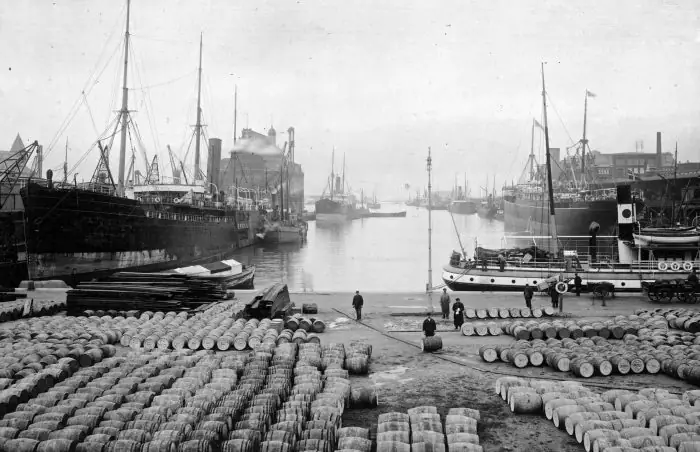
cobe.dk
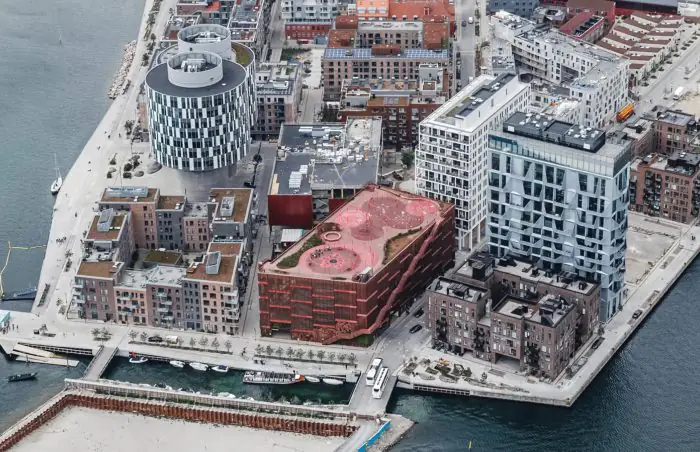
cobe.dk
Nordhavn has been meticulously designed to prioritise convenience and enjoyment for pedestrians, cyclists, and public transport users, discouraging reliance on cars—an essential characteristic for a city aspiring to be futuristic: we talked about this in the article “The 15-minute city”, including the example of Nordhavn. The city planners envision Nordhavn evolving into a lively waterfront neighbourhood with 40,000 inhabitants over the next 40 years.
Preserving the historical essence, a few industrial buildings have been thoughtfully maintained and restored, seamlessly integrated into the cityscape. These structures evoke the maritime history of the new neighbourhoods, contributing to a distinct “sense of place”. This thoughtful preservation adds a touch of authenticity to the vibrant future envisioned for Nordhavn.
Wood City
Location: Helsinki, Finland
Architects: Anttinen Oiva Arkkitehdit Oy
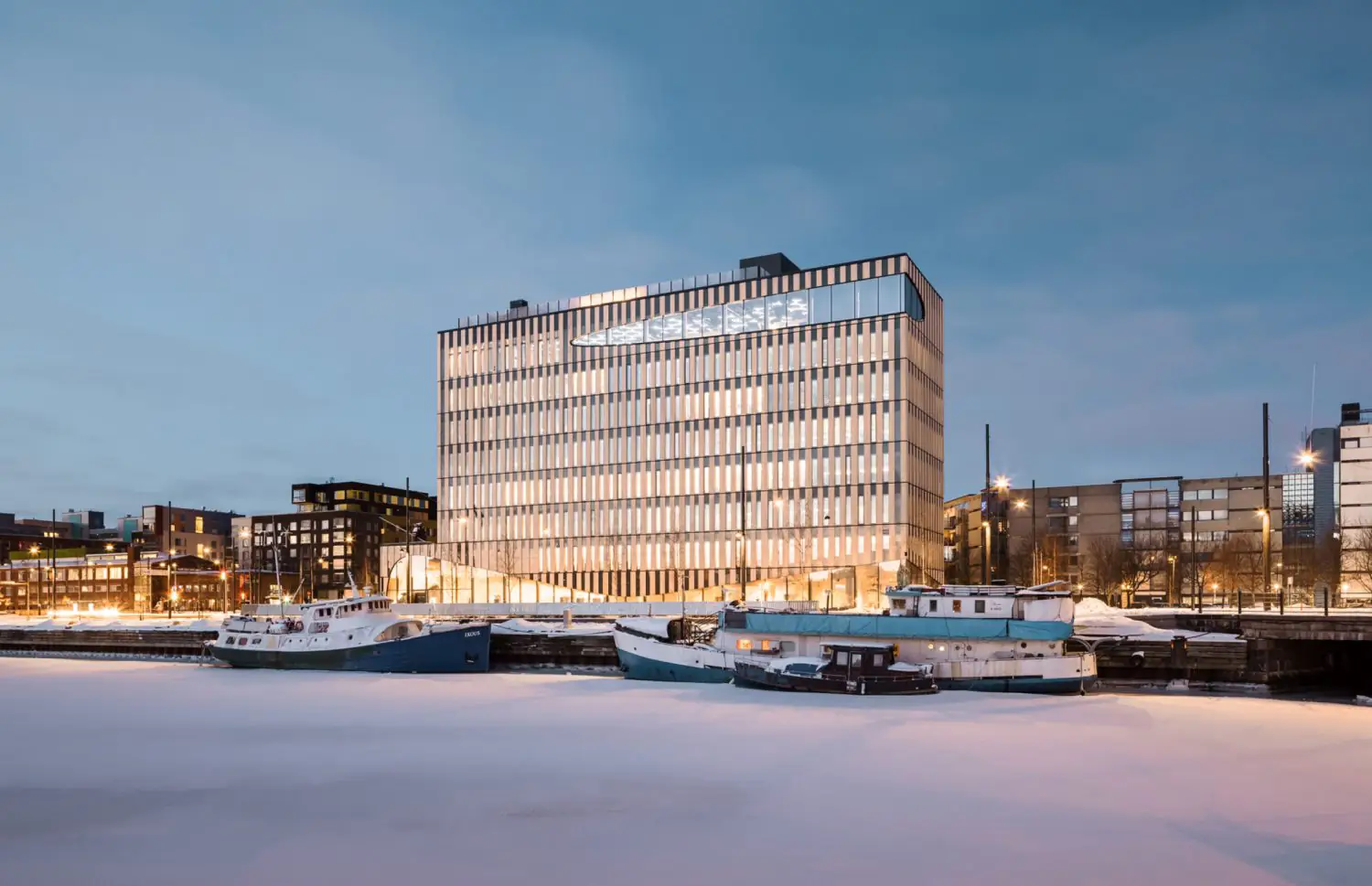
The Wood City project by Anttinen Oiva Architects and Masu Planning in Helsinki is a minimalist development consisting of offices, apartment buildings, and hotels along the waterfront in the city center. Notably, the project stands out due to its unique use of materials. The eight-storey buildings, including supporting structures, are entirely constructed from wood. Wood is also a predominant feature in the interiors, courtyards, and playgrounds.
The majority of the wood used in construction comes from Finnish forests, a choice that not only reduces delivery costs but also minimises the project’s carbon footprint. This sustainable approach aligns with the growing emphasis on environmentally friendly construction practices.
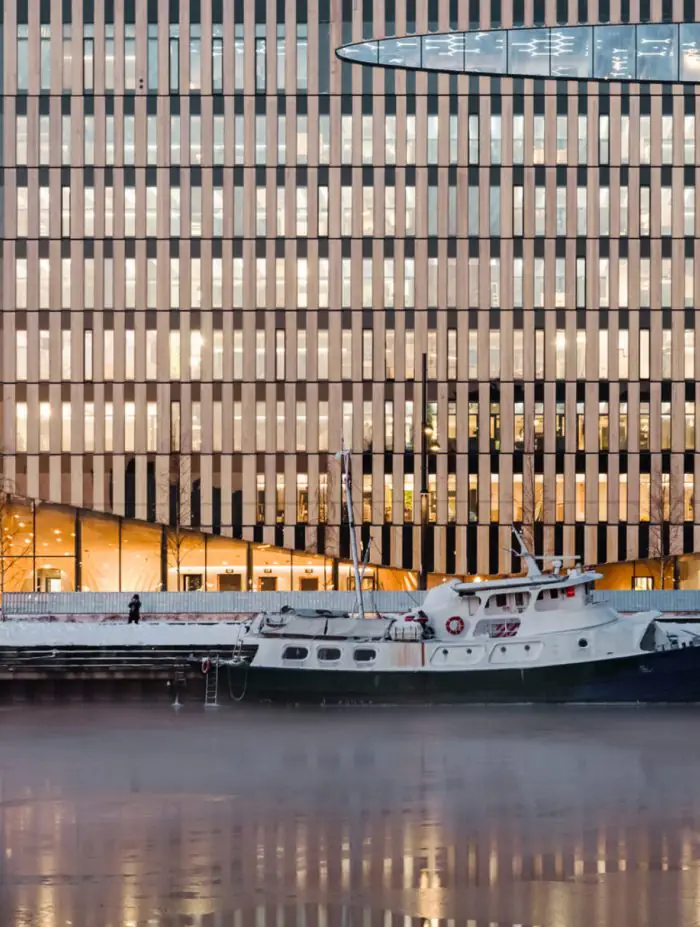
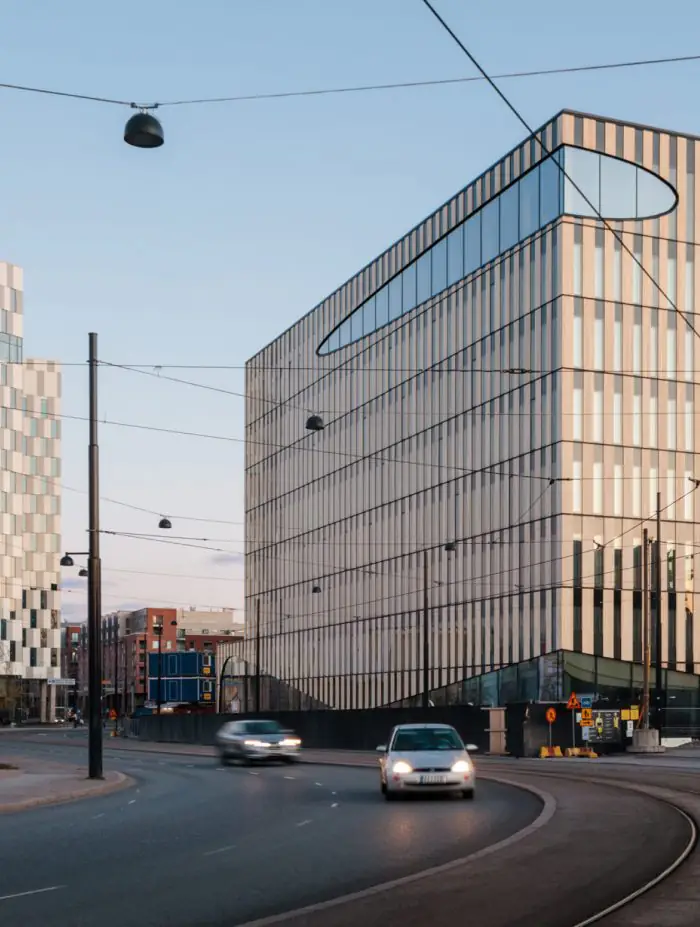
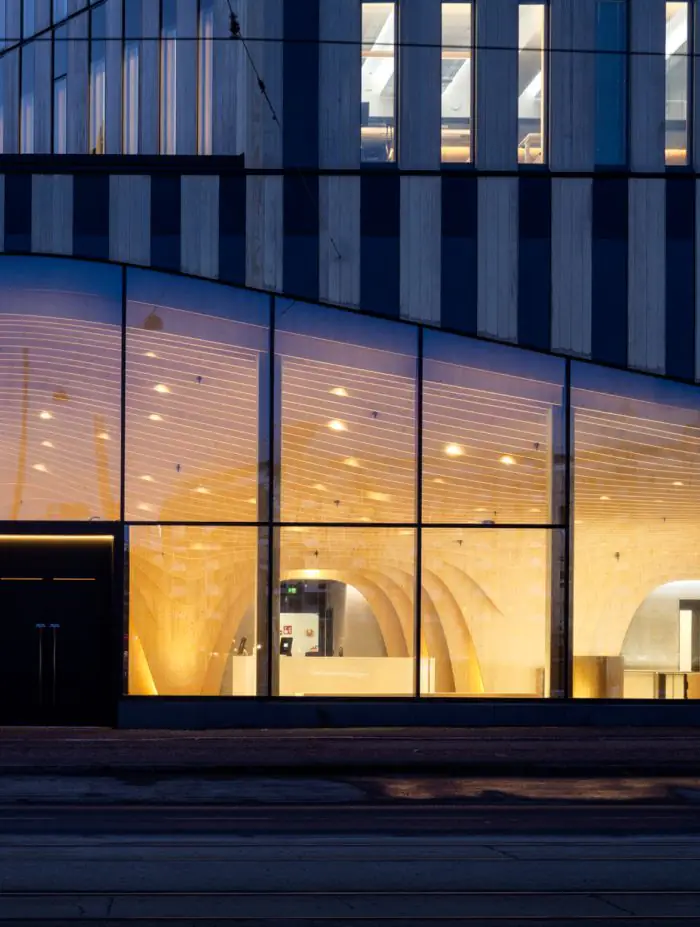
The significance of the Wood City project extends beyond Helsinki, particularly impacting Latvia. With over half of its territory covered by forests, Latvia takes pride in its expanding wood processing industry. Wood City’s success serves as a testament to the feasibility of such projects, showcasing the potential benefits for both the local economy and the environment. This strategic alignment highlights the positive impact of sustainable construction practices on a broader scale. In order to widely introduce wood into construction, it is important to revise the building regulations that were formed in the second half of the 20th century, when wood was considered to be insufficiently strong and fire-resistant material.
Kop van Zuid
Location: Rotterdam, the Netherlands
Architects: Beyond Plan B
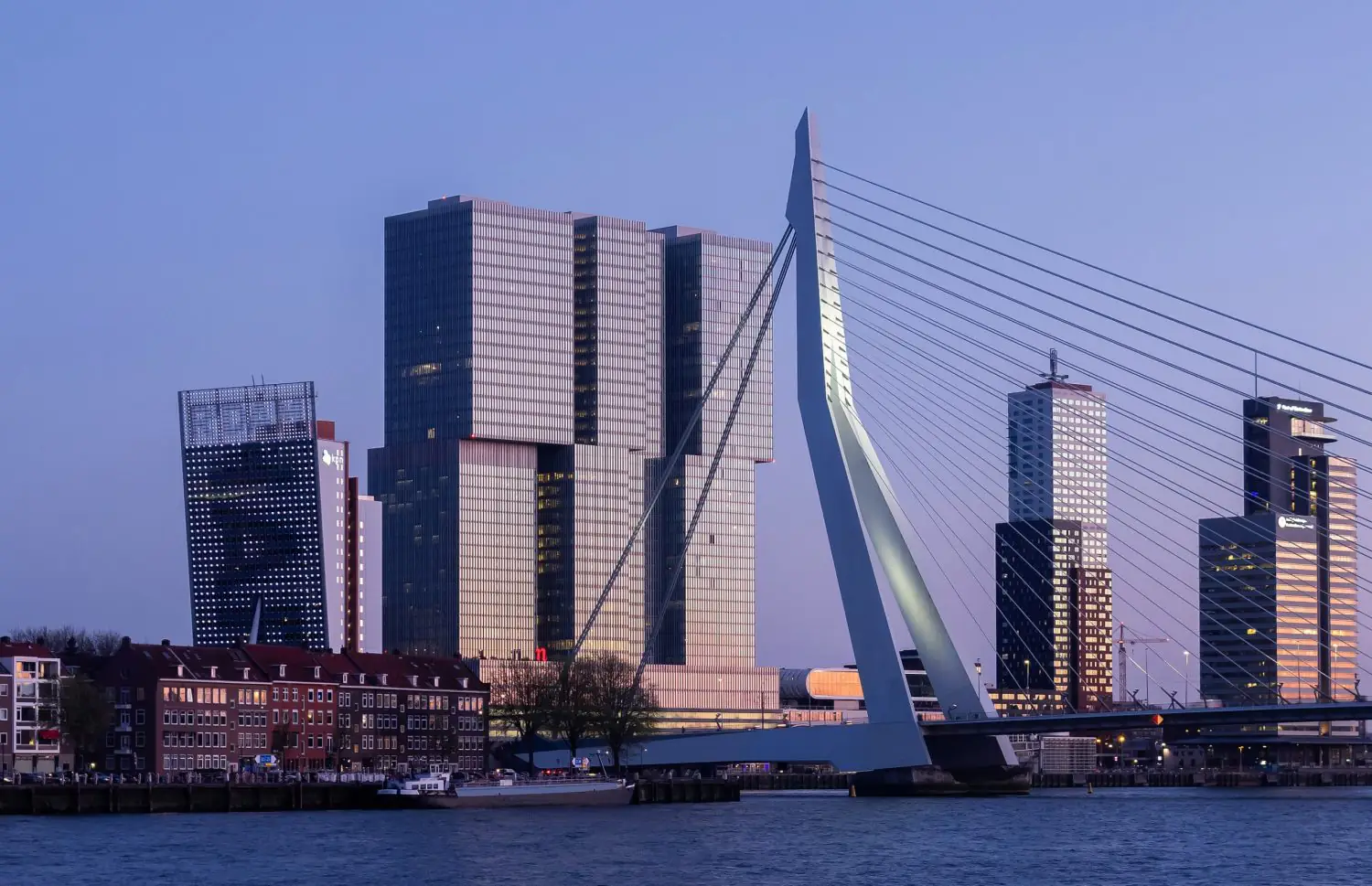
wikipedia.org
By the early 1980s, the harbour industries of post-industrial Rotterdam had gradually relocated to the suburbs, downstream, and closer to the sea. The abandoned areas on both sides of the river transformed from derelict shipyards into a popular neighbourhood within forty years. The visually bold and diverse development, featuring many skyscrapers (including the iconic De Rotterdam by OMA, the bureau that conducted the pre-design study for the Riga Port City project), was connected by the Erasmus Bridge and a new metro line.
It is a mixed-use development where people live, work, attend theatres, enjoy wine in cafes and restaurants, study at the university, and stroll along the water. According to project planners, the Kop van Zuid development has also catalysed the transformation of Rotterdam’s neighbouring districts.
The architects’ engagement with Rotterdam’s industrial heritage is also noteworthy. For instance, the residential high-rise Fenix I is situated directly on the roof of a former harbour warehouse.
Seestadt Aspern
Location: Vienna, Austria
Architects: Sweco
A residential area built on the site of a former airport near Vienna stands as an architectural experiment undertaken by the Swedish practice Sweco and a forward-thinking Viennese municipality. Implemented solutions include energy-efficient houses with geothermal heating, solar-powered electricity, and buildings constructed with recycled concrete from the runway pavement.
In this innovative setting, the development extends to the water—although both water and development emerged simultaneously: a vast artificial lake spanning five hectares was meticulously designed and excavated for Seestadt Aspern. Currently, approximately 25,000 people live and work in this evolving community, with their numbers steadily increasing. The outcome is a socially and economically successful development that has evolved into a fully-fledged town, situated around an artificial lake in a landlocked country.
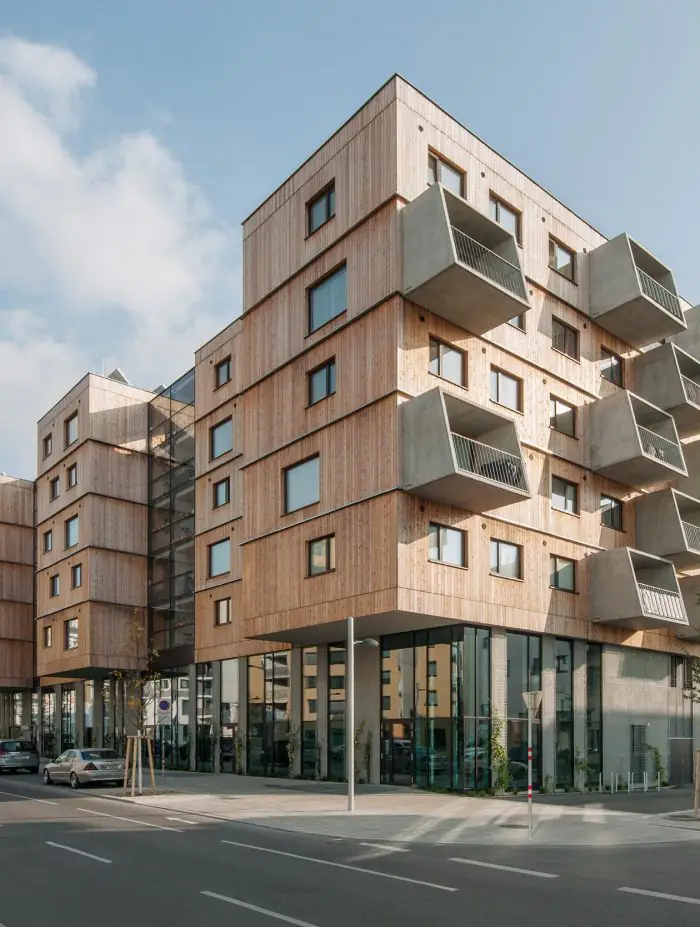
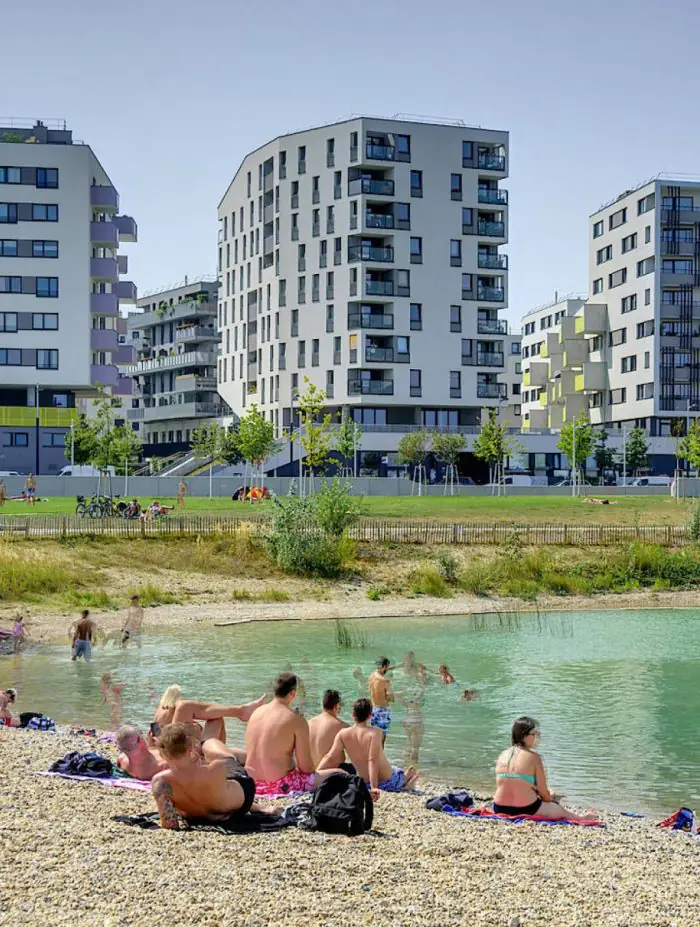
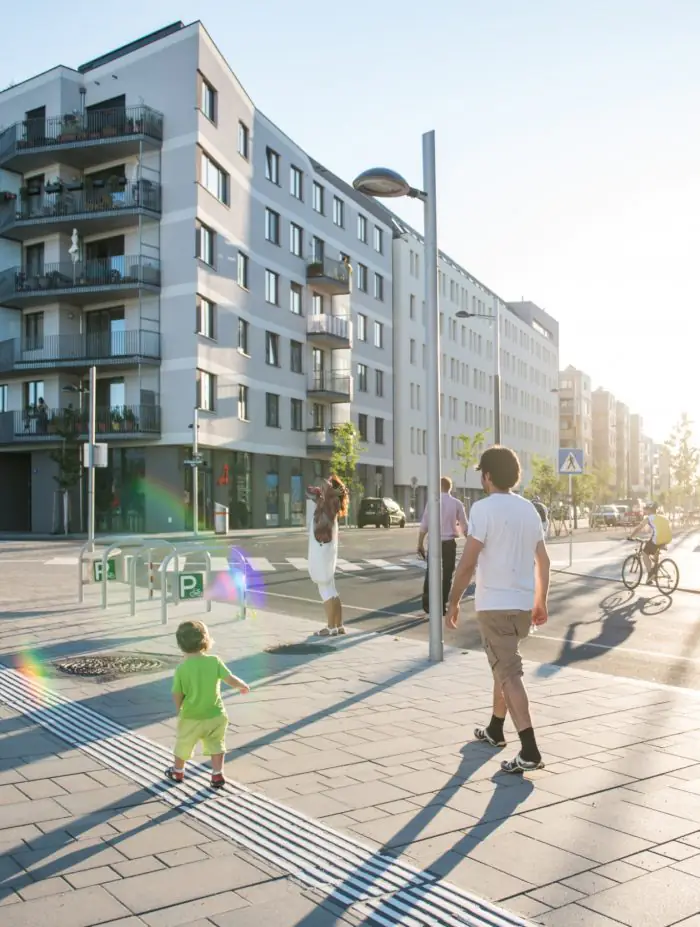
The key takeaway? The crucial factors are the quality of architectural design and its execution, not the extent of water around which the development is planned.
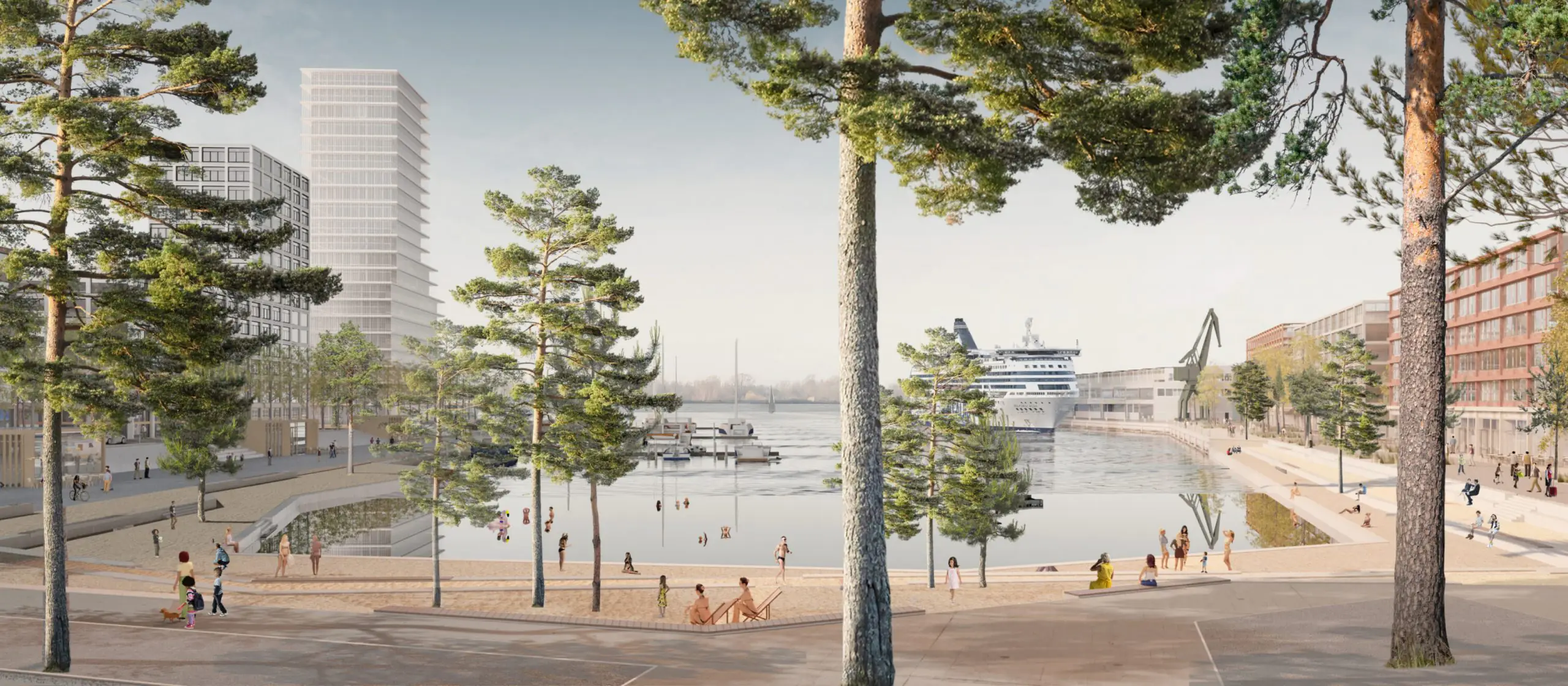
citify.eu
Projects Under Development
Riga Port City
Location: Riga, Latvia
Architects: Hosoya Schaefer Architects AG
The central idea of this project is to transform Riga’s passenger port into a city attraction point. The river terminal, scheduled for completion in 2026, aims to channel passengers directly into the city centre. Upon disembarking from a ferry or yacht, tourists will step into a modern neighbourhood that carefully preserves historical buildings, serving as a reminder of the area’s industrial past and minimising environmental impact.
According to the project architects, the goals include densifying the development of the centre, enhancing green spaces in the surrounding area, and establishing connections between the city and the Daugava waterfront. Access from Riga Port City to the Old Town and the future Rail Baltica railway station will be facilitated by tram, bicycle, or on foot along the river embankment.
Young City Gdansk
Location: Gdansk, Poland
Architects: MVRDV
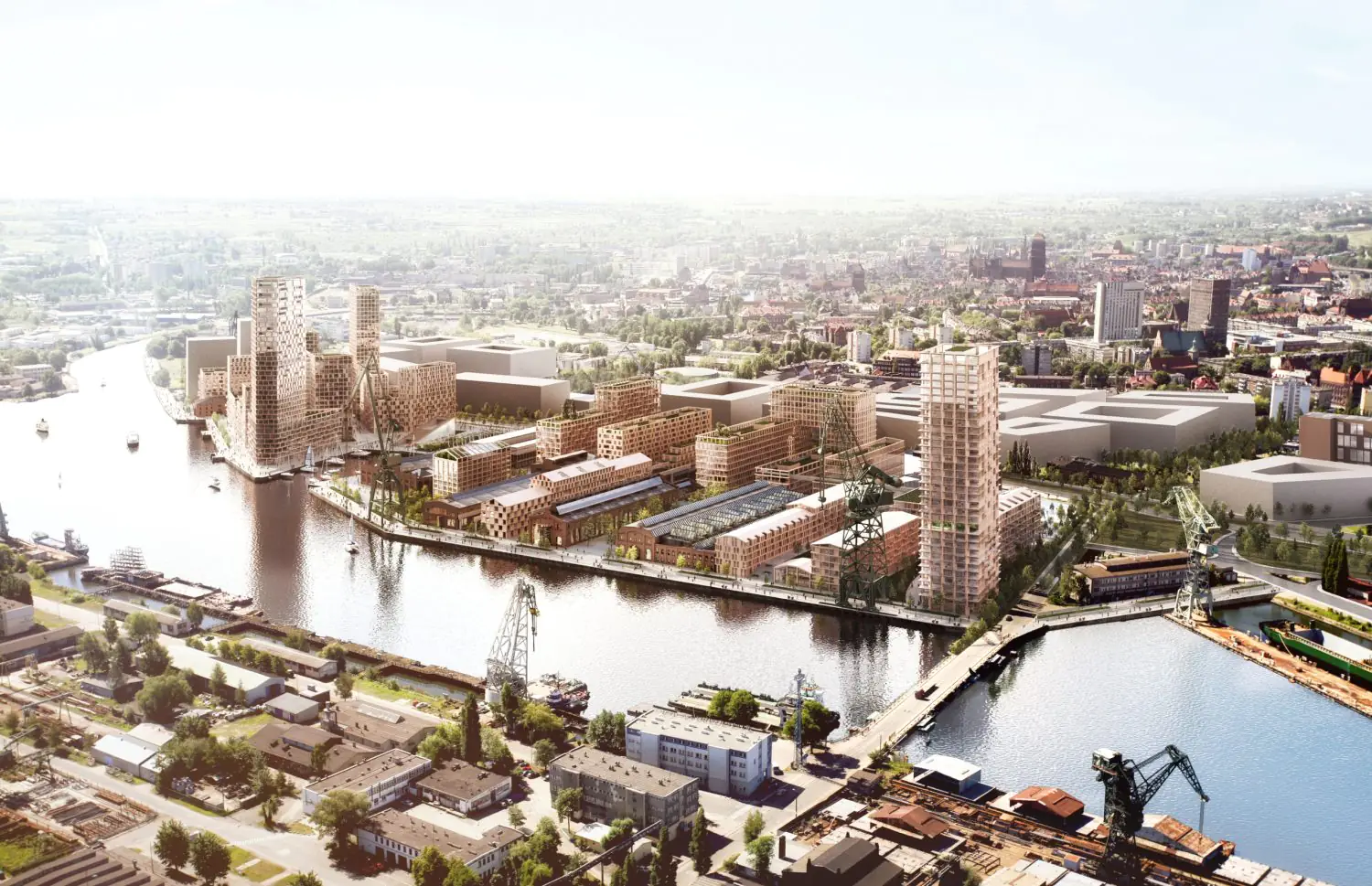
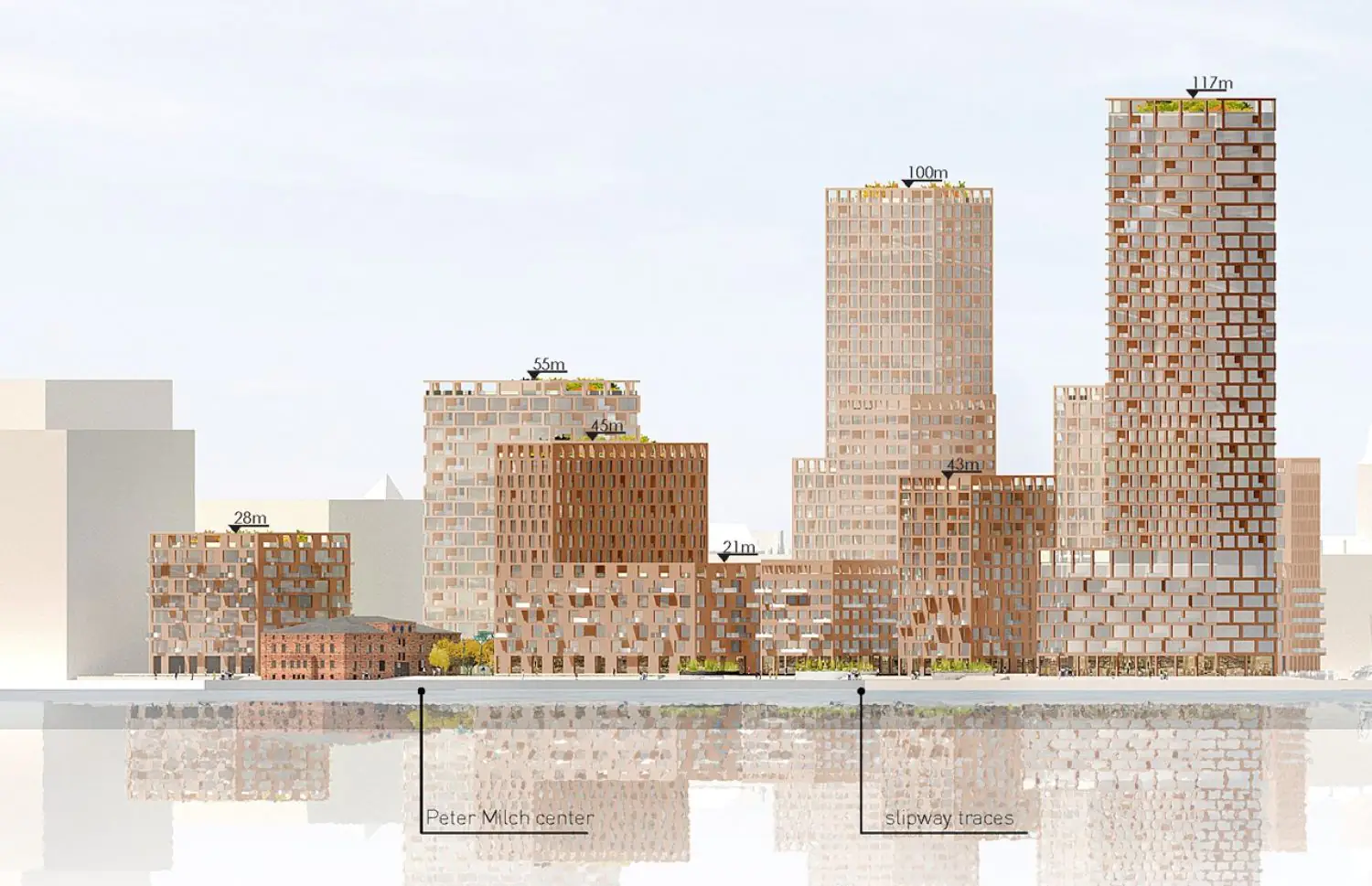
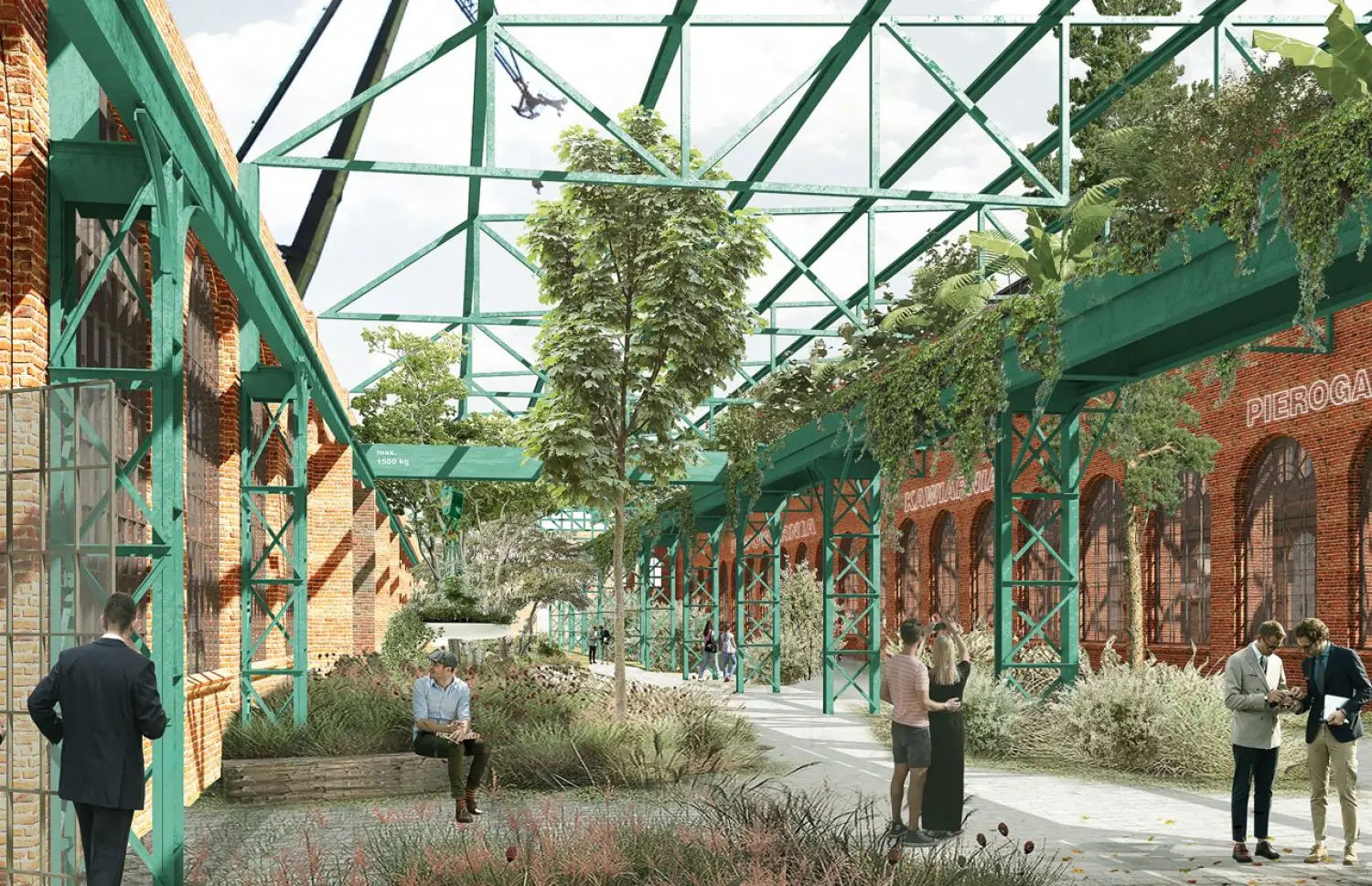
Most of the red-brick shipyards in Gdańsk’s Young City neighbourhood are well-preserved, and the Dutch bureau MVRDV plans to use its industrial heritage as the foundation for its project. The architects intend to restore these industrial buildings, incorporating a new program, while the upcoming development will feature brick finishes as a tribute to the area’s history.
Squares, residential buildings, an art museum, a market, and a multi-level promenade connecting them will grace the Vistula River. This new mixed-use neighbourhood will address a common shortcoming in former industrial areas by incorporating parks, trees along the pavements, and green courtyards.
River Lagan Waterfront
Location: Belfast, UK
Architects: Henning Larsen
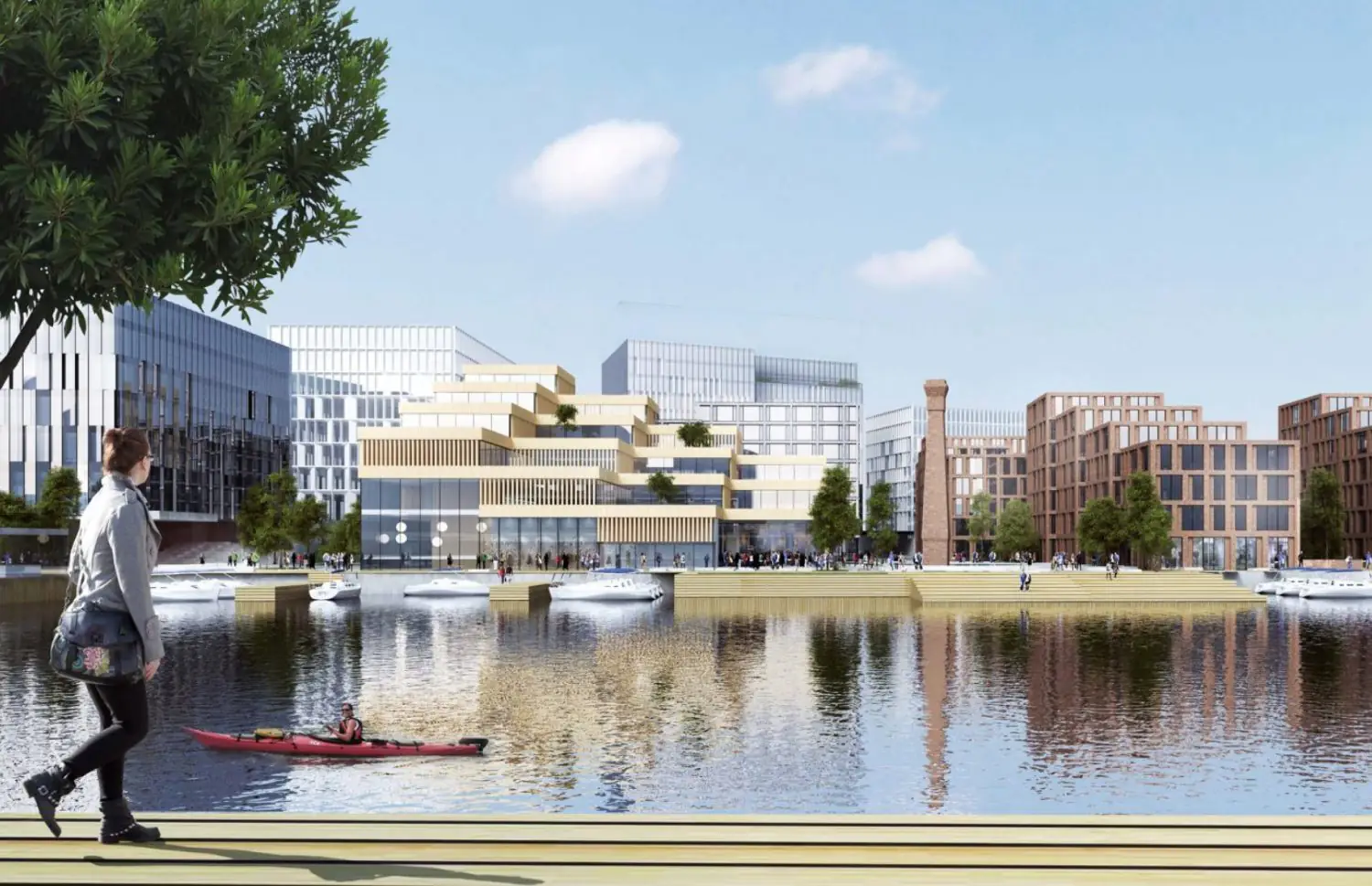
A new master plan along Belfast’s River Lagan is poised to introduce 750 new homes and flats, along with offices, hotels, and public spaces. The architects from the Danish firm Henning Larsen Architects aim to enhance walking and cycling routes along the waterfront and construct a pedestrian bridge across the river, fostering unity rather than dividing the city into two halves.
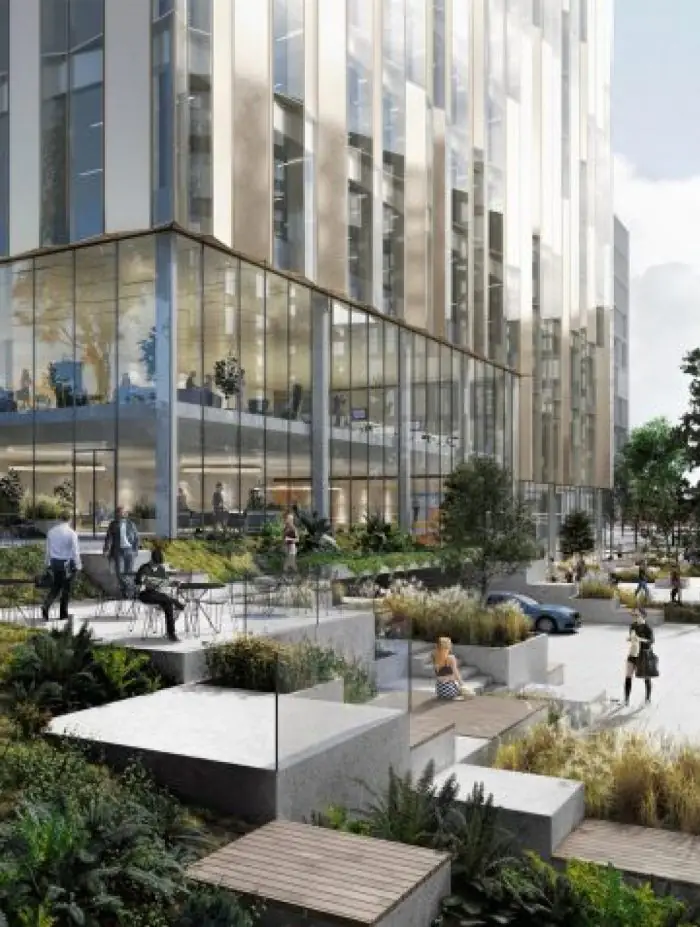
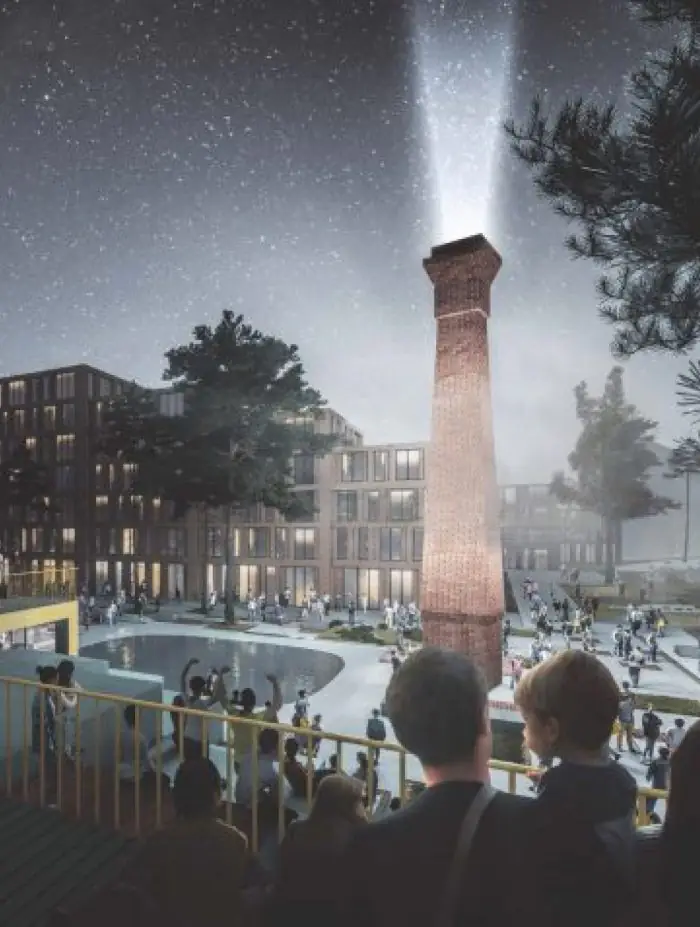
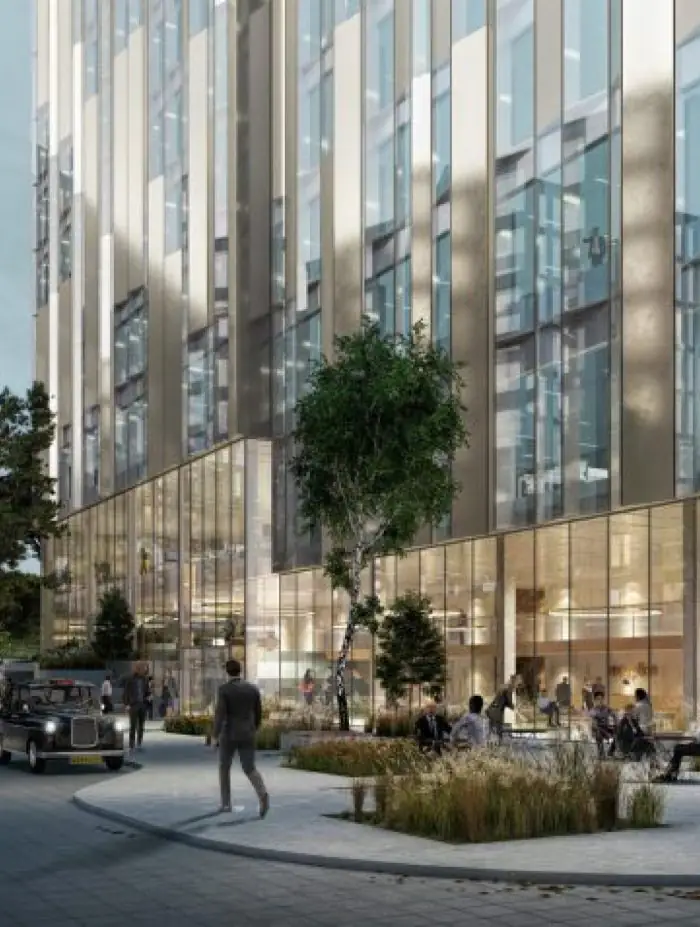
Considering Belfast’s challenging maritime climate, the architects have carefully factored this in their design. For instance, they have calculated the optimal shape of facades on multiple levels, directing harsh seasonal winds up the roofs rather than onto the streets. This approach ensures that numerous urban activities remain accessible during the colder months of the year.
Deutzer Hafen
Location: Cologne, Germany
Architects: Cobe
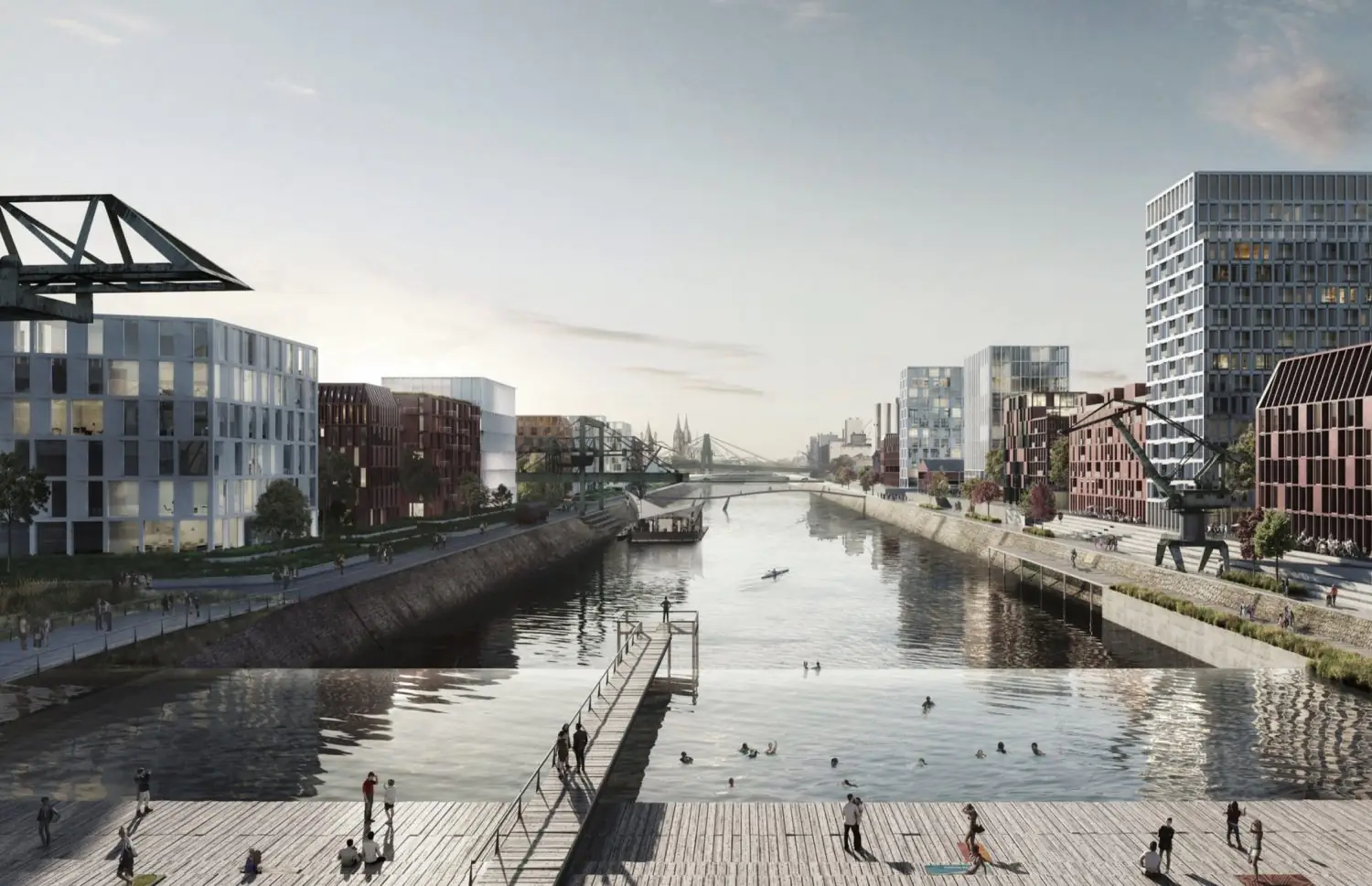
The text is well-constructed, with only a minor suggestion for improved flow: The water level in the Rhine, flowing through Cologne, fluctuates by ten metres throughout the year—a challenge faced by many waterfront cities. However, the Cobe offices aim to turn this challenge into an advantage in designing the new neighbourhood. They have devised a system to filter rainwater, directing it into a public swimming pool and also using it to water the plants in the parks. Public transport, cycleways, and car parks within the block will be elevated to protect against flooding. The team envisions their mixed-use neighbourhood living in close symbiosis with the surrounding water.
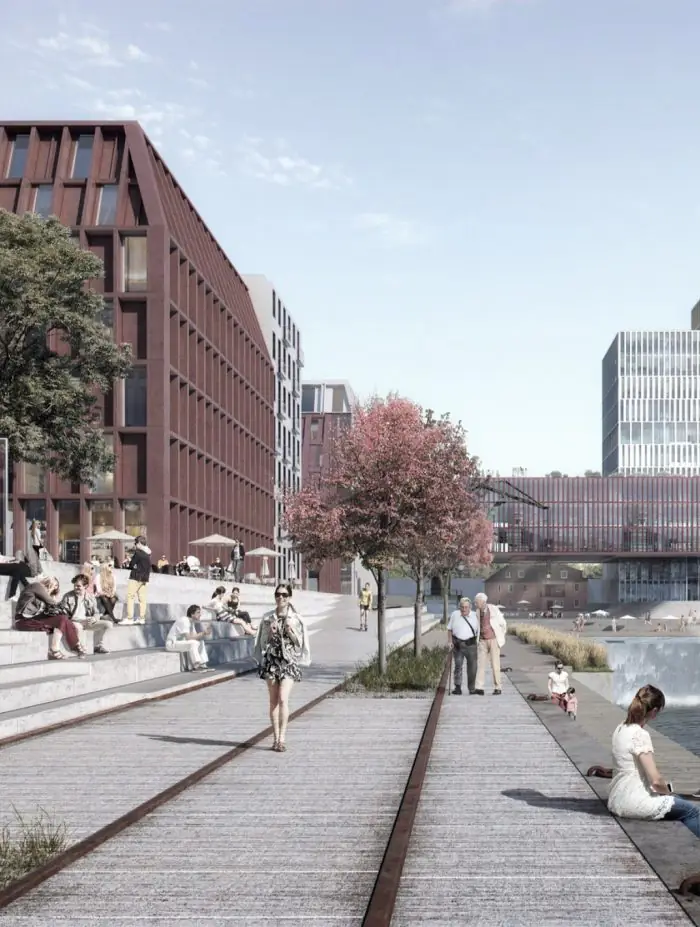
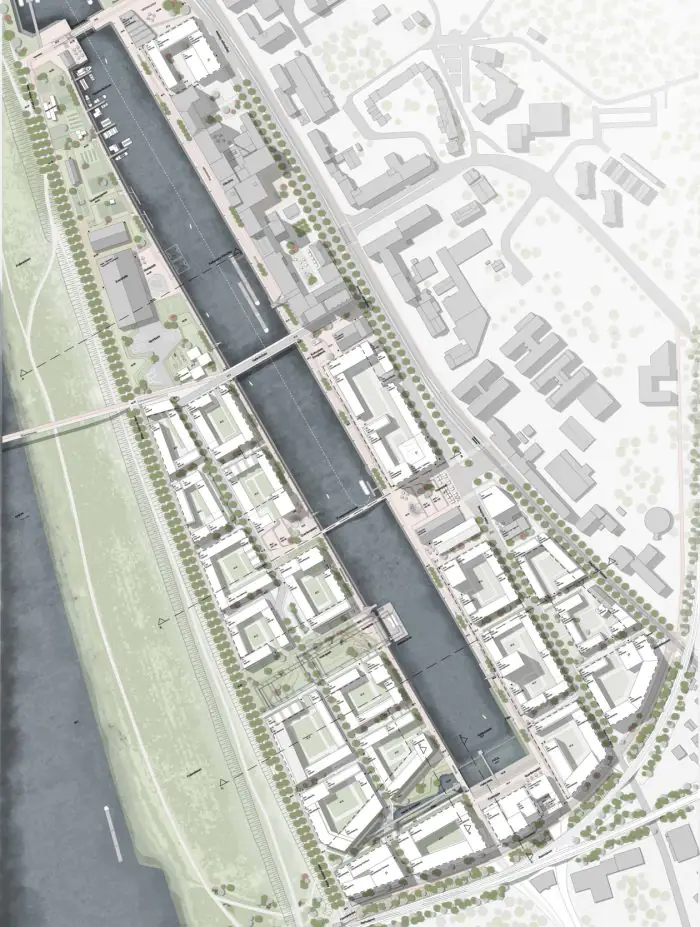
In a bid to preserve traces of the industrial past, the architects have taken it a step further: instead of incorporating industrial buildings, they plan to integrate industrial objects such as cranes, mills, and other metal machinery into the landscape.
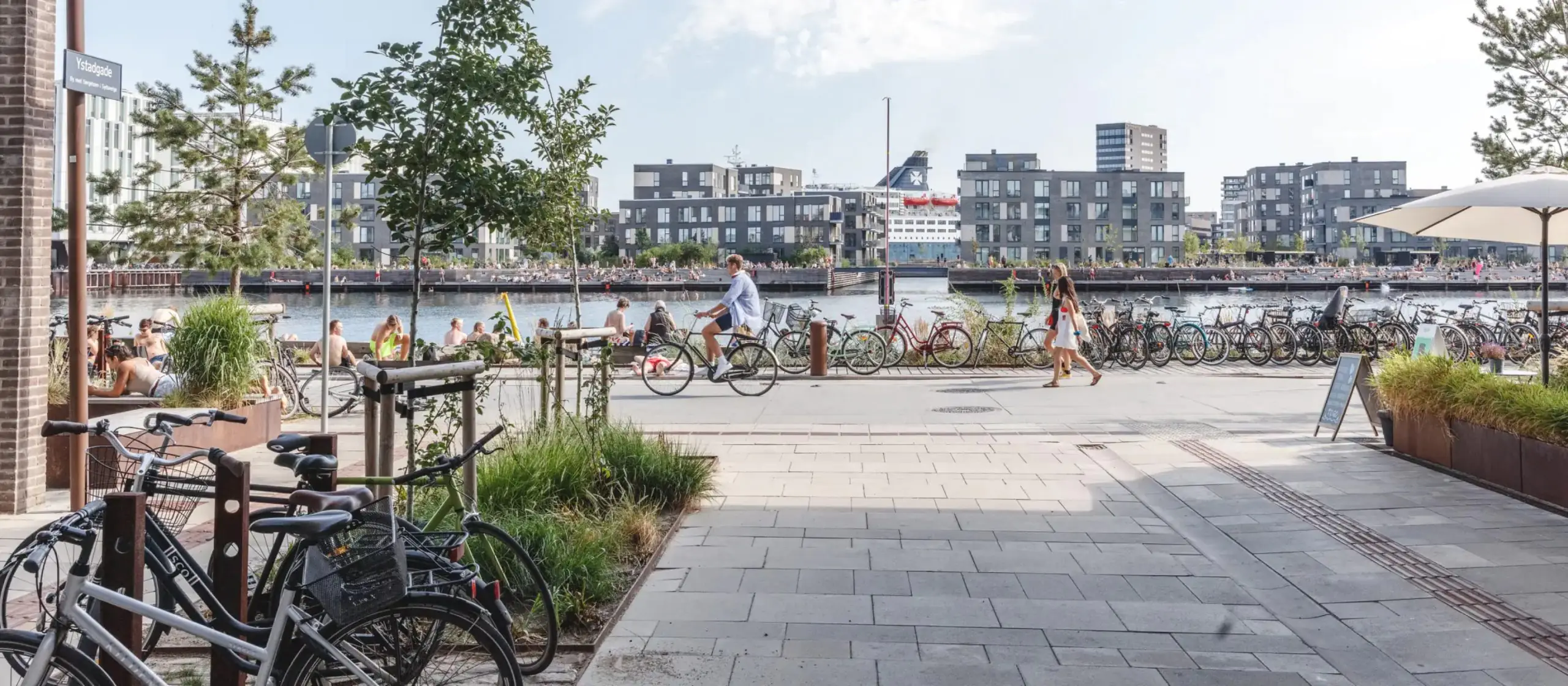
cobe.dk
In contrast to local waterfront development projects in the Baltic States, these large-scale projects favour bold and innovative solutions that align with their size. Infrastructural integration is central to such endeavours, as it dictates the connection of the development area with the rest of the city.
The culture and history of the built-up area are not overshadowed; instead, the local context is often reinterpreted in the most unexpected ways. This marks a radically different approach to landscaping, providing interesting precedents for future large-scale projects in Riga and Latvia.



